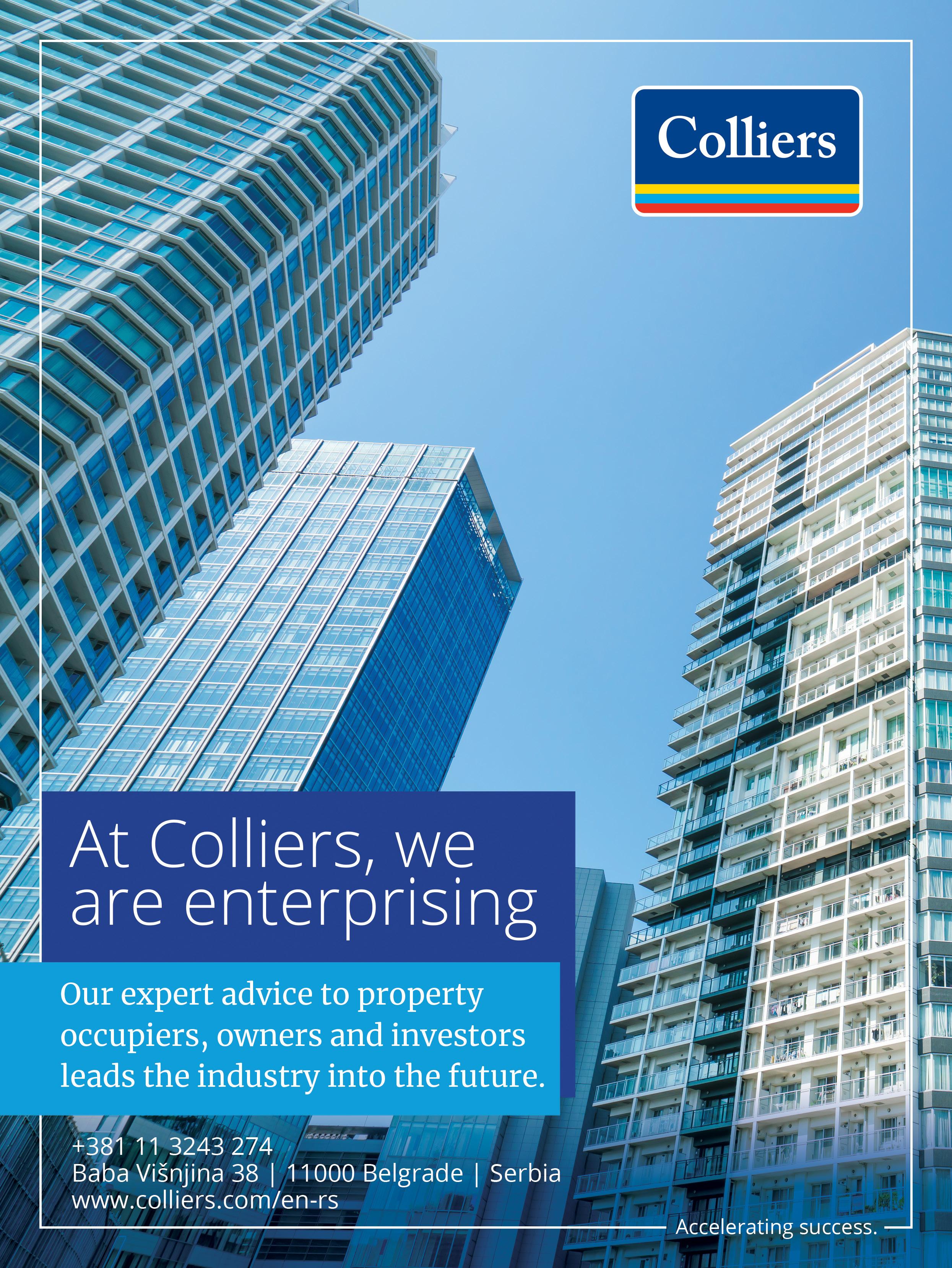INVEST IN SERBIA

A COMPLETE OVERVIEW OF: BEST INVESTMENT OPPORTUNITIES BUSINESS ENVIRONMENT REAL ESTATE MARKET TRENDS
SAVA CENTER
A GRAND COMEBACK OF THE LARGEST CONGRESS VENUE IN SOUTHEAST EUROPE



A COMPLETE OVERVIEW OF: BEST INVESTMENT OPPORTUNITIES BUSINESS ENVIRONMENT REAL ESTATE MARKET TRENDS
A GRAND COMEBACK OF THE LARGEST CONGRESS VENUE IN SOUTHEAST EUROPE

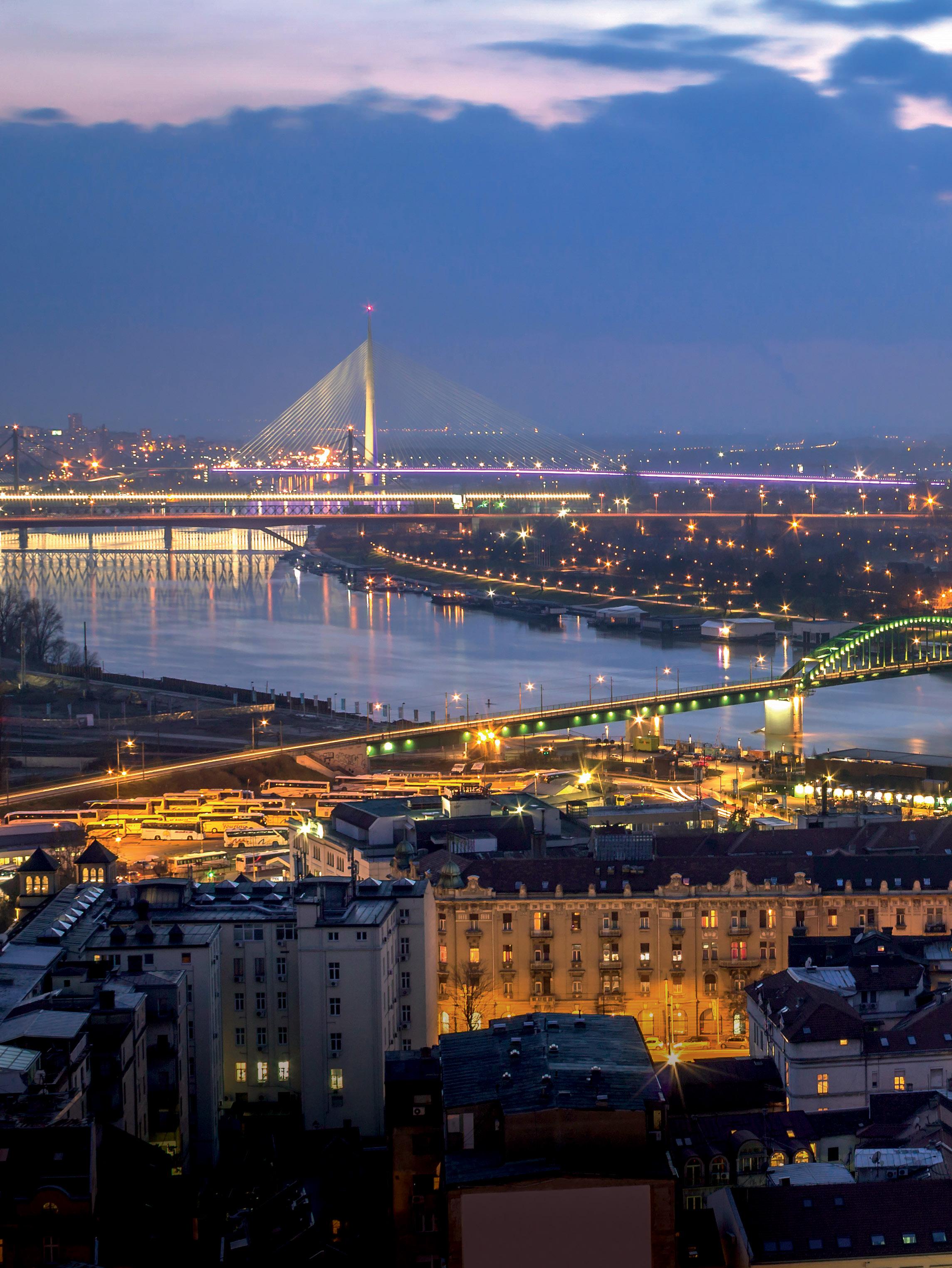 Photo: IG @ACAMATIC / www.throughmyeyes.rs
Photo: IG @ACAMATIC / www.throughmyeyes.rs

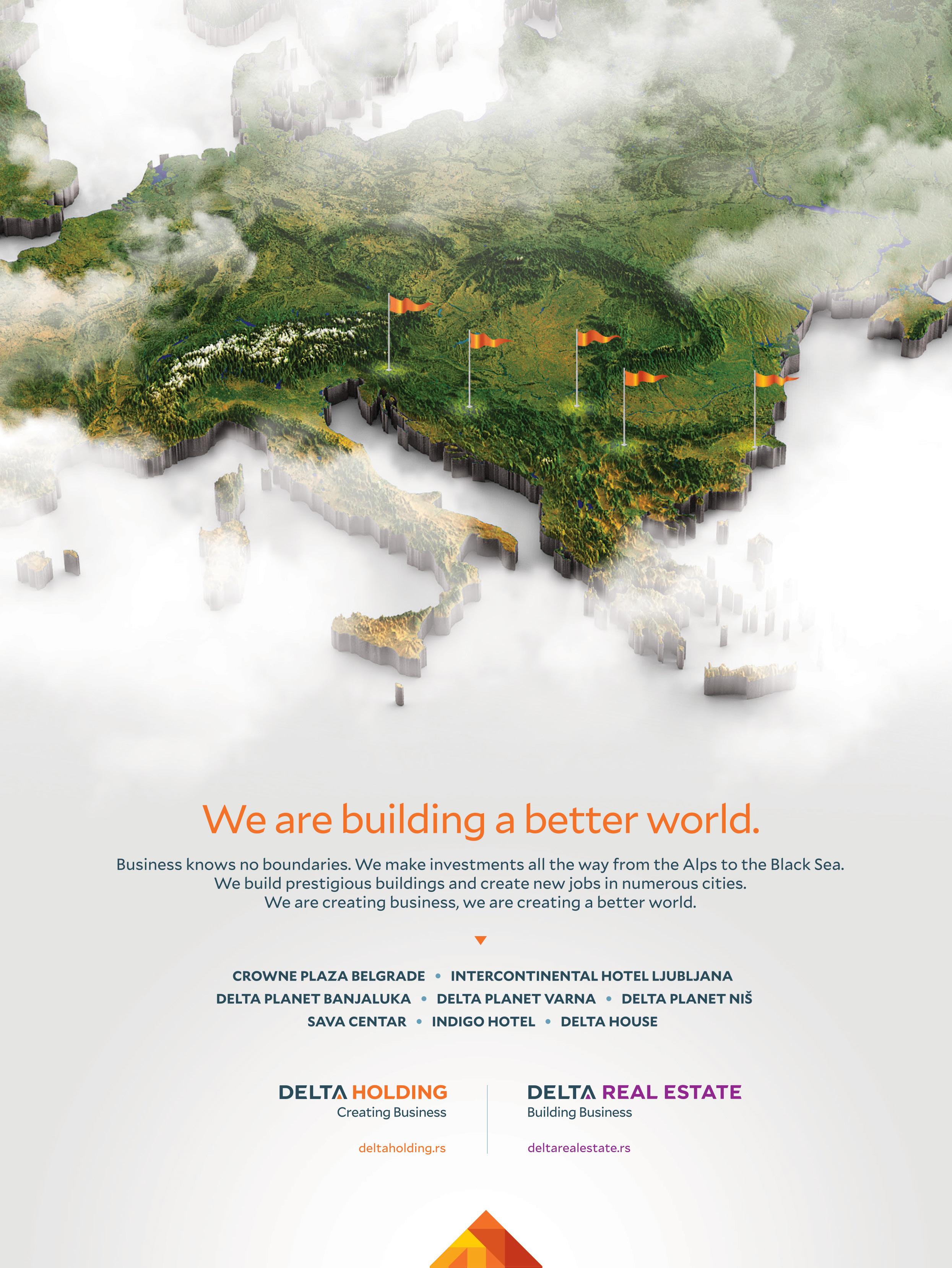
MAGAZINE
SPECIAL MIPIM 2023 EDITION MARCH 2023
Real Estate magazine covers all current real estate subjects as well as modern lifestyle topics such as architecture, design, fashion, art, travel, gastronomy, and prestigious fresh new releases. The magazine was established in 2016 and is published on a quarterly basis.
DIRECTOR
Vladimir Popović vladimir.popovic@realestate-magazine .rs
EDITOR-IN-CHIEF
Gordana Knežević Monašević gordana.km@realestate-magazine.rs
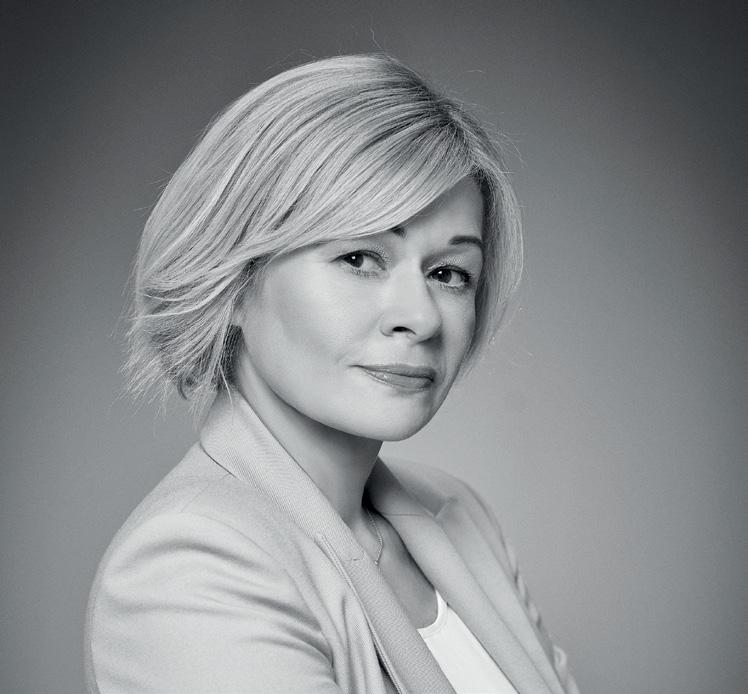
ADVERTISING SALES DIRECTOR
Jelena Randjelović jelena.r@realestate-magazine.rs
ADVERTISING MANAGER
Dragana Radović dragana.r@realestate-magazine.rs
ART DIRECTOR
Ilija Petrović
Indigo Child indigochild.ilija@gmail.com
EDITORIAL OFFICE
Jovana Nikolić
Petra Vasiljević
Petar Dobrosavljević
Ana Kralj
TRANSLATOR
Jovana Nikolić
+381 11 4320 501 redakcija@realestate-magazine.rs
PRINTING
Zlatna Knjiga Jagodina
Bagrdanski put bb, Jagodina
PUBLISHER
West Media World
Baba Višnjina 38
Vračar, Belgrade
Publisher is not responsible for the content of published advertisments.
www.realestate-magazine.rs
CIP - Каталогизација у публикацији
Народна библиотека Србије, Београд
659 REAL Estate magazine : real estate, design and lifestyle / editor-in-chief Gordana Knežević Monašević. - [English
Leading property market MIPIM, a real estate event not to be missed, will once again bring together thousands of industry experts and enthusiasts in Cannes this March. I believe that we are all looking forward to the opportunity to learn about the new trends in the industry, but more importantly, to meet with old and new friends and business partners. Our pleasure to be with all of you again is even greater given that Real Estate magazine, i.e., our company West Media World, is now an official media partner of MIPIM as well as the organizer of the investment conference "Serbia: A Place for Your Growth," which will be held at MIPIM. It will be a chance for you to learn firsthand what has made Serbia one of the most appealing investment destinations in Europe in recent years and what great opportunities Serbia currently offers you for the development of industrial, residential, office, and hospitality projects, which can give you a significant and quick return on investment.
A detailed overview of the investment potential and business climate in Serbia, trends in the real estate market, and specific offers that are open throughout Serbia—from its industrial zones, with great opportunities for the development of all kinds of manufacture and logistics centers, to beautiful spas and climatic places, ideal for the development of medical tourism and spa and wellness capacities, to Belgrade and the fantastic opportunities it offers as the capital city for the development of up-to-date office and hospitality projects—you can see it in this special MIPIM edition, in the interviews we did with the speakers at the conference: Danilo Cicmil, Special Investment Adviser to the President of Serbia, Marko Čadež, President of the Chamber of Commerce and Industry of
Serbia, Marko Stojčić, City Architect of the City of Belgrade, and Vladimir Popović, Managing Partner at Colliers Serbia.
You can learn even more about Serbia and its real estate trends from some of the most successful local companies and investors that we present to you in this issue. Their outstanding results and numerous realized projects in Serbia and the region best demonstrate how Serbia has taken a firm course in recent years in the direction of the development of green construction, renewable energy sources, energy efficiency, and state-ofthe-art development projects according to the highest world standards, all of which contributed to the exceptional growth value of the entire Serbia real estate market and significantly set it apart as a lucrative investment destination compared to all other countries of the Western Balkans.
We are also proud to introduce to you a number of Serbian municipalities in the interior, which will astonish you with their natural beauty, rich in the most exquisite regional flavors, and whose investment potential hides a perfect winning formula for business development, especially in light of the fact that Serbia has a workforce that is exceptionally qualified and an excellently developed infrastructure that is ideal for the nearshoring trend.
For the end, we saved for you the most beautiful—some of the most stunning Belgrade photos. If any of them catch your eye— and we bet they will—we are sure that very soon we will meet in Serbia. And we are looking forward to welcoming you.
Yours...

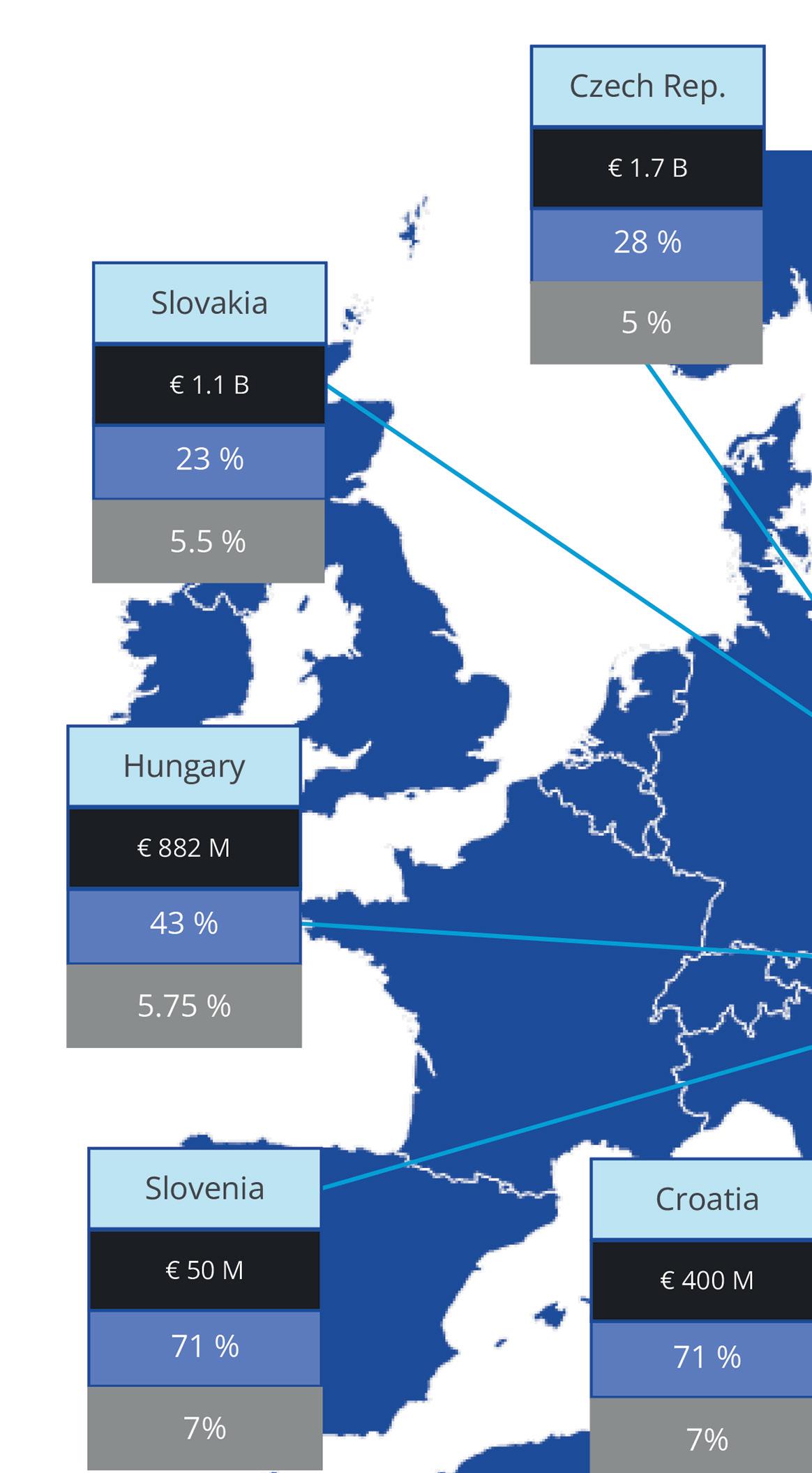
Actionable advice has never been more important to investors in real assets. Faced with a macro environment that offers no shortage of reasons to hesitate, many are confining capital to the sidelines, awaiting more clarity and for relative stability to return. Real estate is by no means immune to the volatility impacting capital markets globally. In many markets a recalibration is underway that we expect to continue well into 2023. Yet it is also immediately evident that the fundamentals around real estate remain strong, and that investors are highly attuned to the advantages it presents as an asset class.
In terms of investment, the Serbian real estate market has seen a steady growth in the last few years, and Serbia is becoming an increasingly attractive market for foreign investors. The country has a stable political environment, a well-developed legal system. The Serbian government has been making significant investments in the real estate sector, offering tax incentives and subsidies to investors. The market is expected to grow further in the coming years, with more foreign investment and an increase in residential and commercial construction.
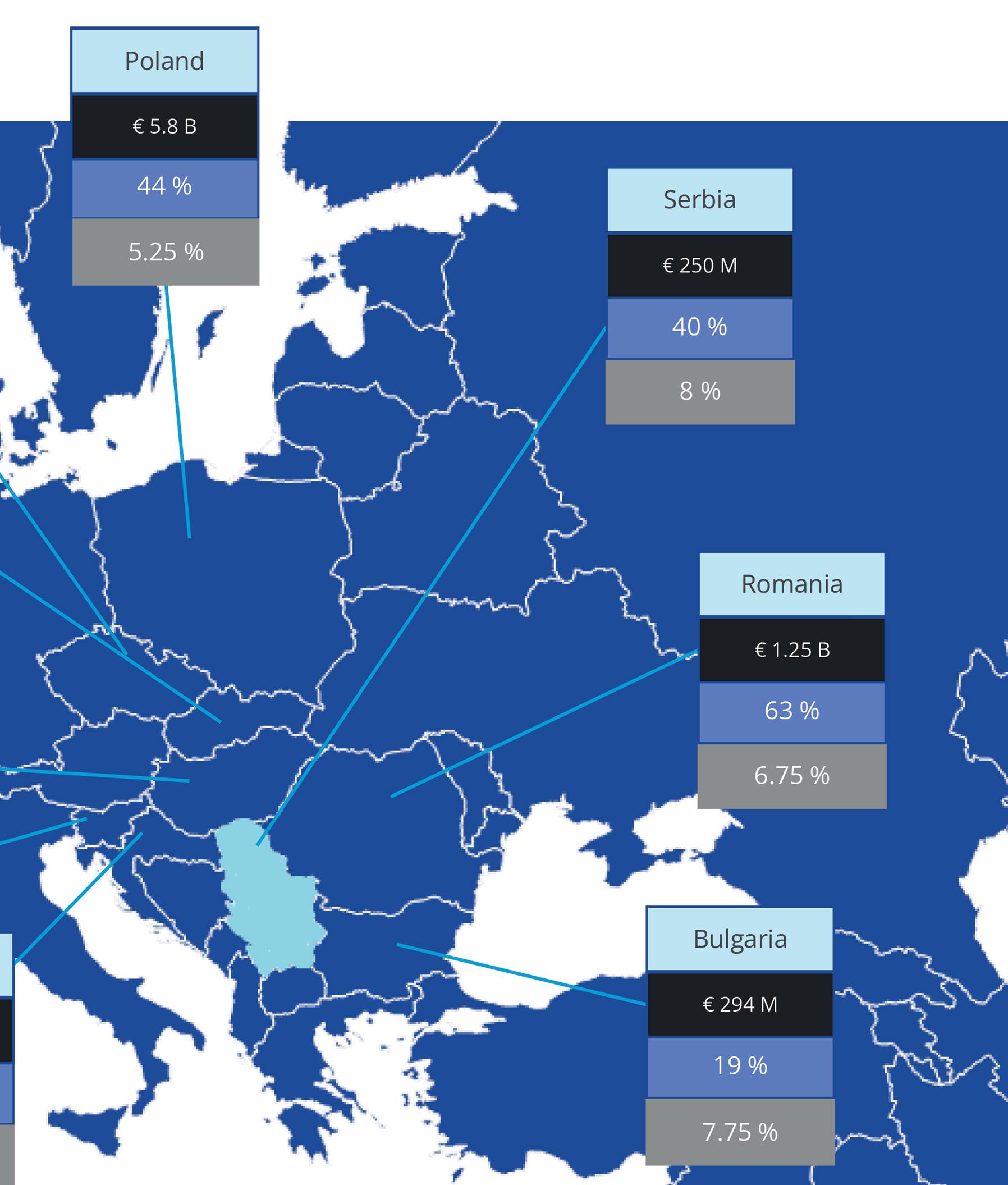

According to Danilo Cicimil, Special Investment Adviser to the President of Serbia, Serbia offers new opportunities for business growth due to its political and economic stability, competitive operating costs, a talent pool, a strategically significant location, and a unique network of free trade agreements offering customs-free access to a market of 1.3 billion customers
By: GORDANA KNEŽEVIĆ MONAŠEVIĆ Photo: DARIO KONSTANTINOVIĆSerbia is a very diverse country with a strong heritage across all sectors, thus offering many investment opportunities. Many major international investors have already recognized its potential, which has led to record amounts of FDI inflows to Serbia over the past years. We asked Danilo Cicmil, Special Investment Adviser to the President of Serbia, about the primary benefits of investing in Serbia as well as the prospects Serbia can provide foreign investors in the real estate market.
Serbia has become one of Europe's most desirable investment locations in recent years. What are the major benefits of investing in Serbia, and how would you sum up the overall investment environment?
— Improving the investment climate and attracting direct investments have been among our government’s top priorities over the last 10 years, along with ensuring political and economic stability and growth. In that respect, great results were achieved as an outcome of the bold economic and structural reforms that were introduced. Fiscal stability has been ensured, unemployment is halved, continuous export growth is recorded, and Serbia is on a clear path towards EU membership while continuing to lead the region towards cooperation and unity. Resilience and stability were proved
by the government also during the COVID-19 health crisis, when Serbia had among the lowest GDP drops in Europe in 2020, as well as during the ongoing geo-political challenges, when we scored a national record in FDI inflow over the past two years.
The effort to improve the investment climate is constantly present across all sectors of our economy: E-Government Services ( including the electronic issuance of building permits, which positioned Serbia among the top 10 countries in that respect); Continuously high investments in public infrastructure (among which the mixed-use fast railway Belgrade-Budapest, i.e. the largest infrastructure project in this part of Europe); improvement
and alignment of laws in line with EU acquis; and health and education infrastructure development are just some of the noticeable aspects of the government’s devoted work. Also, due to the strong focus on IT development and education, ICT exports tripled over the last five years, and now our country is widely acknowledged in this field as well.
SERBIA IS ON A CLEAR PATH TOWARDS EU MEMBERSHIP WHILE CONTINUING TO LEAD THE REGION TOWARDS COOPERATION AND UNITY
Also, what gives us real-time insight into the needs of the investors is the fact that we support the projects throughout the whole implementation process. This enables us to identify and understand the main obstacles and target them through different sets of measures.
As a result of all the above mentioned, in recent years, the Republic of Serbia has profiled itself as a leading investment destination and been ranked at the very top by the most prominent institutions and organizations such as the Financial Times (FDI Intelligence) FDI Greenfield Performance Index, European Cities and Regions of the Future 2022/23, and IBM Global Location Trends.
That, combined with the fact that over the past few years we have successfully implemented more than 250 new investments, is the greatest proof of Serbia’s flourishing investment climate.
The foreign direct investment inflow broke the record in 2022, which is not the first time. What distinguishes Serbia from the rest of the region as a prime location for investment?

— Yes, the trend of growing FDI inflows that began in 2012 has continued to this day. Despite the global crisis, the last two years saw a record amount of FDI inflows to Serbia; only in 2022 they surpassed 4 billion euros.
Serious companies are looking for stability, timely reactions to possible challenges, and a reliable and proven partner. Serbia has had political and economic stability for years now, offering a predictable business and investment environment for companies. Then, we have proven success in the implementation of direct foreign investments, and we walk that path each day, successfully understanding the needs of the investors and their potential
projects. More importantly, Serbia has competitive operating costs (electricity, gas, etc.) and a pool of talents (a qualified workforce), which are essential for every project. Without people and their knowledge and qualities, the projects cannot succeed. Of particular importance, as well, is a country’s connectivity, accessibility, and openness to trade. Serbia has a strategically important location: it is a crossroads between East and West and on the shortest continental route that connects these parts of the world. Serbia, via Pan-European Corridor
X, connects Turkey, Greece, and Central and Eastern Europe. This ensures that most of the major European cities can be reached within 24 hours by road. Combined with a great and unique network of free trade agreements offering customs-free access to the market of 1.3 billion customers, Serbia opens new chances for the growth of businesses worldwide.
Last, but not least, the Serbian government is giving much attention to each project and each investor. That is, you can expect comprehensive and strong support from the govern-

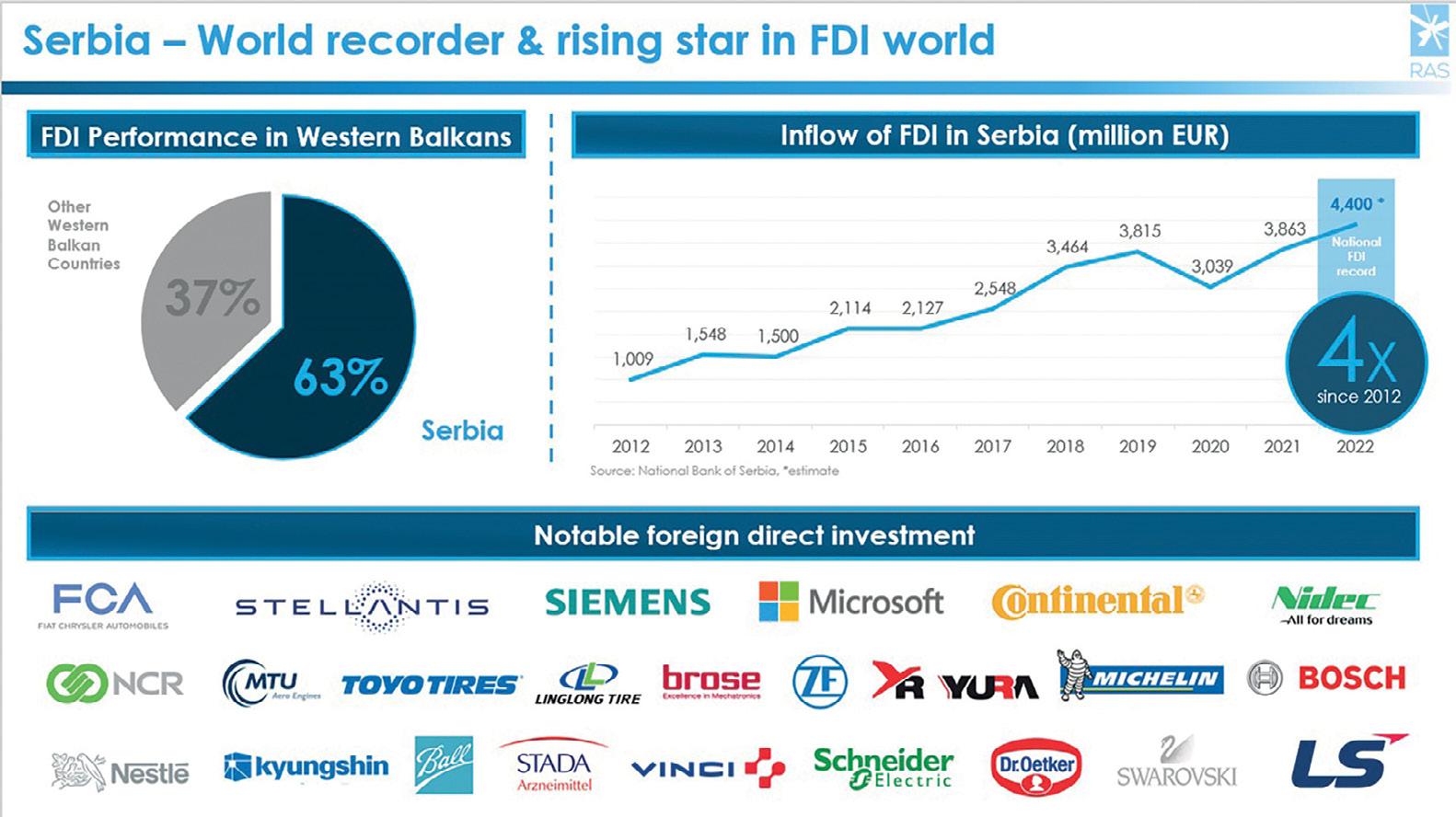
ment of the Republic of Serbia at every stage of the investment process, from the declaration of intent to invest to the completion of the project. We are functioning as a team, and our goal is the same—to build a future, to grow faster, and for mutual benefit.
What industries saw the highest foreign investment in Serbia last year, and what FDI trends do you anticipate for this year?
— When it comes to investments by activity, the most FDI inflows in 2022 were attracted by the manufacturing industry, especially the automotive sector, which has been the general trend over the last few years, closely followed by the construction industry. The volume, size, and complexity of projects are increasing, with special emphasis placed on meeting high environmental and social standards, indicating the country's higher level of development and quality of projects. When we started with the aggressive FDI attraction strategy almost 10 years ago, the unemployment rate was extremely high—over 24%—and with many people working in the shadow economy, they were not even getting the minimum wage. So we commenced with more labor-intensive projects that can employ a larger number of people in a short period of time, and what we managed to do was rapidly decrease unemployment and ensure transparent working conditions. Over the past years, with the great amount of work placed, our focus has been on more capital-intensive projects, bringing state-of-the-art technologies and higher wages.
We plan to continue in the same manner with FDI attraction across all sectors remaining a government priority, intensively working to arrange and implement new investment projects that will go in line with advanced, sophisticated, and green technologies, with a future that is shaped by sustainability and innovations. We are closely monitoring global trends, and our goal is to attract the best practices in the world to Serbia. With the ongoing new industrial revolution and Paris Agreement implementation, Serbia has an opportunity that we cannot afford to miss.
Which industries are currently most open to new investments, and what can Serbia offer foreign investors in the real estate sec-
tor, which has seen tremendous growth in recent years?
— Serbia is a very diverse country with strong heritage across all sectors, thus offering many investment opportunities. When it comes to the manufacturing industry, some of the sectors with the most growth potential are undoubtedly e-mobility, battery storage and electronics, as well as food processing, which has a strong raw material base. On the other hand, when services and other types of projects are concerned, great opportunities lie in IT, renewable energy projects, and the wellness and spa industry due to the country’s richness in natural resources.
Of course, the economic development of a country with a rising living standard and strong investment growth and FDI inflow is always mirrored by blooming construction and real estate, which therefore represents an investment opportunity per se.

WE ARE INTENSIVELY WORKING TO ARRANGE AND IMPLEMENT NEW INVESTMENT PROJECTS THAT WILL GO IN LINE WITH ADVANCED, SOPHISTICATED, AND GREEN TECHNOLOGIESGerman Continental has recently opened a new high-tech factory in Novi Sad Photo: Continental Automotive Serbia
The value of FDIs in the construction industry has more than doubled in the last five years. When we look at statistical and other available data based on construction permits, growth is noticeable across almost all subcategories of real estate offerings, from office space stock rises to the number of built apartments to industrial space, etc.
Besides the demand for additional and new real estate products and the favorable business climate for which our country is already well known among foreign investors, the fact that we are proven efficient in dealing with building permits is also very important to international investors in the real estate segment, with great potential for further development. Serbia is among the top countries in the world in terms of the speed at which it issues building permits. As an important component of our GDP, construction and real estate are constantly in the spotlight for ensuring more favorable development conditions.
Which major foreign investment projects would you pick out as models of good practice that contributed to the growth of investors' businesses as well as the Serbian economy and local communities?

— Over the years, we had many important projects, which all together had a substantial im-
pact on our development path and economy.
The most recent project coming from the manufacturing industry is German Continental, which opened a new high-tech factory in Novi Sad following the establishment of an R&D center in 2018. It is expected that the exports from Serbia will surpass 1.5 billion euros. Another German company that recently reinvested is ZF, with technology that is paving the way for Serbia’s leadership in e-mobility. The company produces electric drives for hybrid and battery electric vehicles, and once projects are fully implemented, ZF will be among the largest Serbian exports.
When it comes to exporting services, In 2021, US company NCR opened a state-of-the-art technological campus in Belgrade, its largest campus in Europe, on about 30,000 square meters, in which 100 million dollars have been invested. Throughout the years and thanks to close cooperation with the Government, from initially 300 local employees, NCR reached close to 5,000 people working in the new Campus.
All of that boosted and contributed to the real estate sector's development, with Belgrade Waterfront (180 ha) being one of the most prominent projects. This monumental urban revitalization project, worth US$3 billion, creates a world-class new city hub and an international destination. It is a landmark of the new development era of Belgrade.
250
NEW INVESTMENTS WERE SUCCESSFULLY IMPLEMENTED IN SERBIA OVER THE PAST FEW YEARS


Serbia is one of the few growing markets in Europe and one of the most promising spots on its investment map, enabling a fast and multifold return on your investment, says Marko Čadež, President of the Chamber of Commerce and Industry of Serbia
By: JOVANA NIKOLIĆ Photo: MIŠA OBRADOVIĆDespite the global difficulties, the Serbian real estate market was one of the few markets in Europe that did not slow down and continued to grow. Marko Čadež, President of the Chamber of Commerce and Industry of Serbia, estimates that a growth trend will continue, announcing plenty of opportunities for fresh investments, especially in the office, logistic, and hospitality sectors, strongly empowered by the implementation of the new legislation that will create more stimulating conditions and additional benefits and incentives for investors.
What is the potential of the Serbian economy, primarily the construction industry, to keep pace with the investment projects of the global companies?
— Investors coming to Serbia, whether they invest in manufacturing, real estate, or services,
can rely on local companies as reliable partners: suppliers from the manufacturing industry, construction and design companies, freight forwarding and logistics companies, as well as the growing IT sector.
When it comes to the construction industry, Serbia has a long tradition and extensive experience in designing and constructing some of the most demanding and impressive buildings on all continents. Today, it has modern companies that apply the highest quality standards and the latest technologies in providing consulting and design services, execut-

ing works, and managing projects both in the country and abroad. The advantage for both investors and the over 60,000 construction companies and entrepreneurs operating in Serbia is the developed building materials industry and the possibilities to be supplied at the local market.
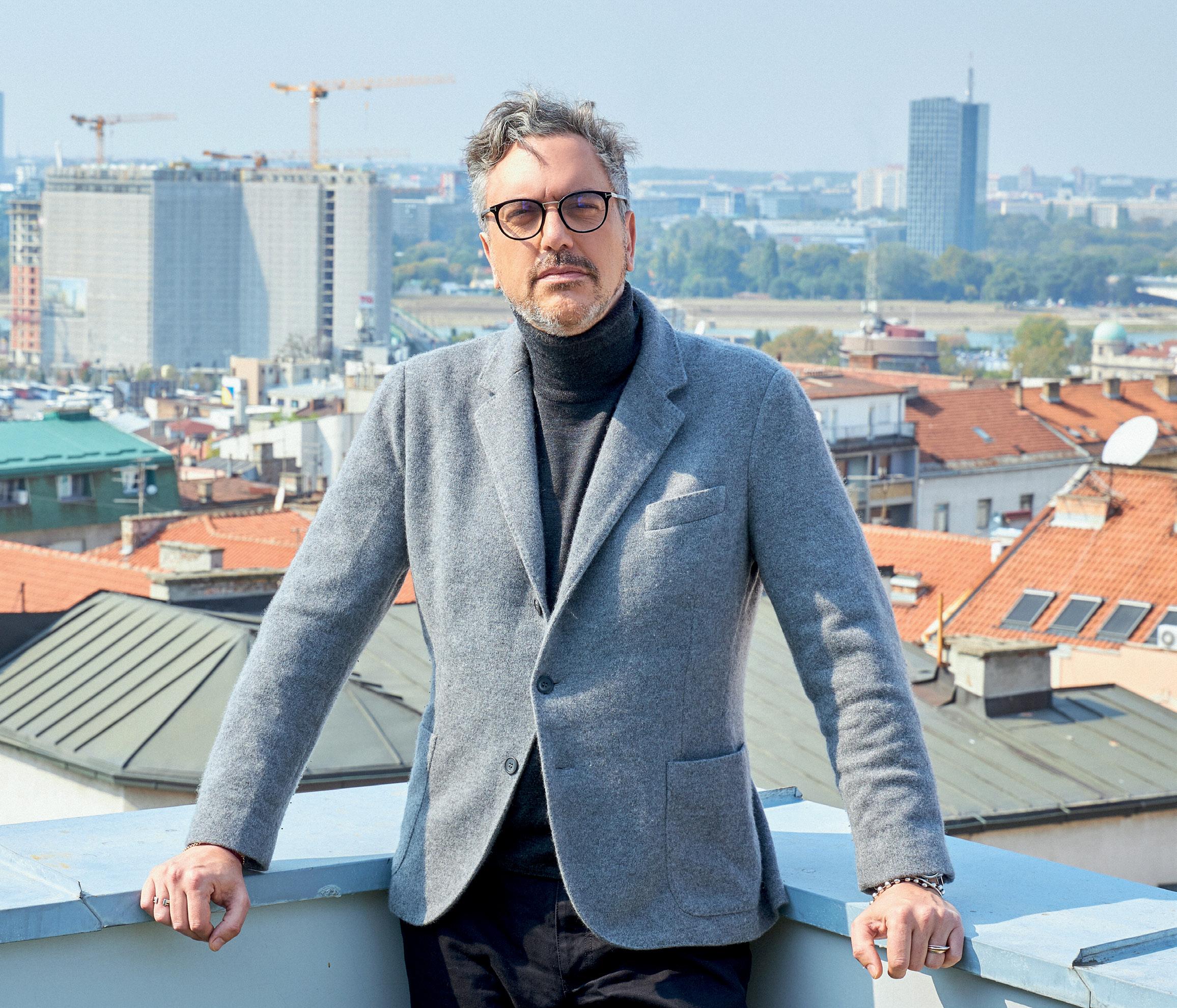
What approach does Serbia take to address the huge demand for construction workers, which is also an issue throughout Europe?
— The people of Serbia are the country's greatest treasure. More than 200,000 people are
employed in the construction industry, from craftsmen to reputable engineers, all around the world. Being faced with migrations and increasing need for construction workers of various profiles due to an increase in investments, we have been intensively working on the development of dual education tailored to the needs of companies, facilitation of the employment procedures for foreigners and creation of a joint labour market that will very soon, in spring, ensure companies to hire the workers they need from other countries within the Open Balkan Initiative.
The high-quality employees get educated at the five state faculties of civil engineering as well as the private faculties of construction management. Serbia currently counts over 10,000 licensed civil engineers and architects, and 250 young engineers obtain a master’s degree from the Faculty of Civil Engineering of the University of Belgrade every year, which is more than half of all engineers in this profession who annually complete the civil engineering studies in Serbia.
What will the announced amendments to the legislation in Serbia bring to investors, especially in real estate projects?
— A set of amended construction and urban planning laws, primarily the umbrella Law on Planning and Construction, created in compliance with the initiatives of the business community and which should be adopted by the Parliament this spring, will bring even more simplified and transparent procedures for obtaining building permits and other supporting documents and even faster, more efficient, and more secure implementation of investment projects.
The implementation of the new legislation will, at the same time, create more stimulating conditions and new opportunities for new projects, which will further improve the offer and introduce additional benefits and incentives for investors. Only by canceling the fee for the conversion of usage right into property right on construction land will approximately 5,000 sites for the construction of approximately 15 million square meters be activated,
and by establishing a register of brownfield sites, industrial and commercial buildings that are no longer in use, new opportunities for investments in their reconstruction in terms of new businesses, residential and office premises will be created.
It is particularly significant that green construction, as a global trend, is being introduced into the Serbian construction industry by the amendments to the law, thus bringing new quality, new obligations, and new responsibilities, as well as incentives for investors who will build ecological and energy-efficient buildings.
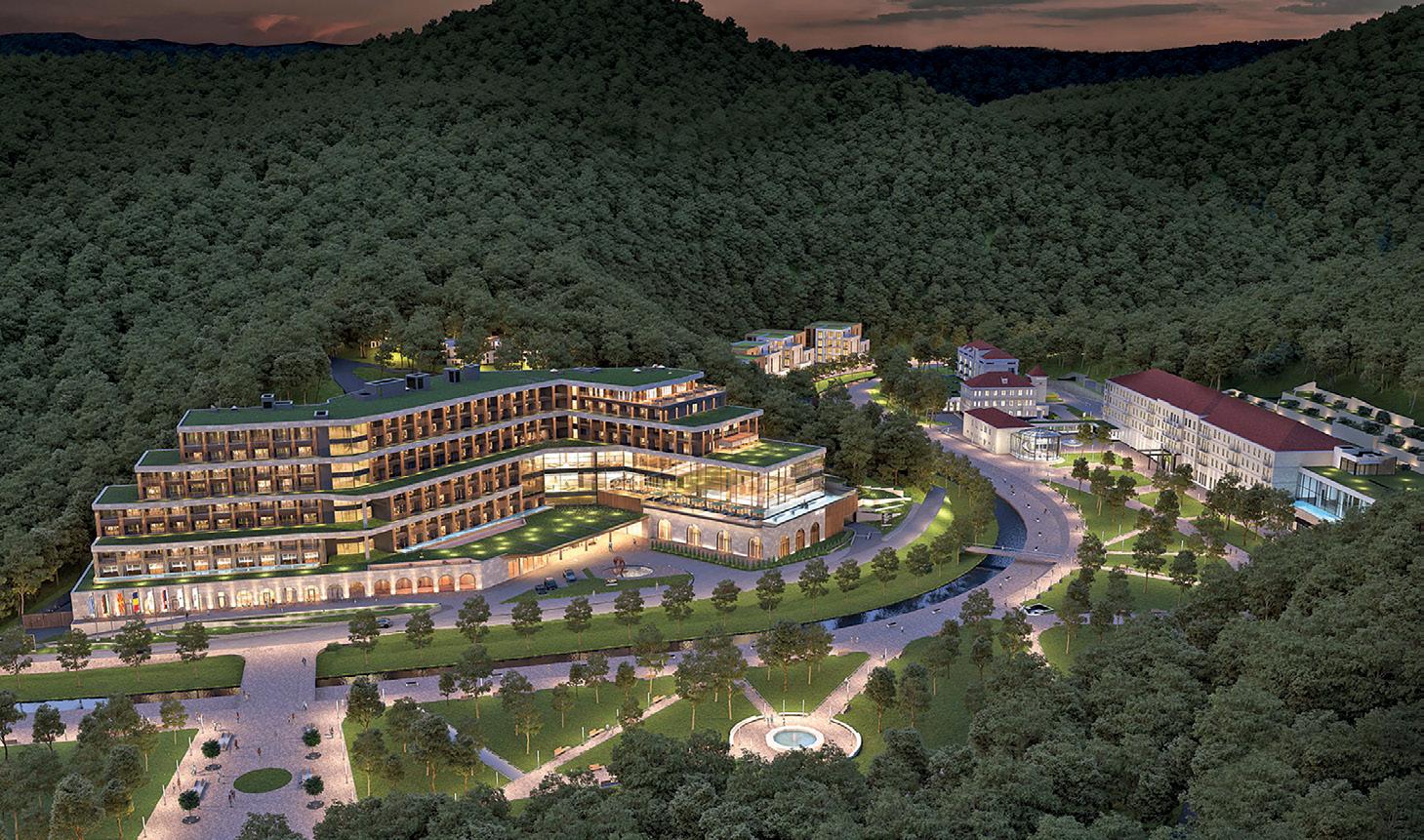
Which significant real estate companies have already recognized the investment opportunities in the Serbian market?
— In recent years, the reputable international companies, which have already invested in the real estate sector or are present in the Serbian market in some other way, have left their mark on the real estate sector in Serbia, from the construction of residential and office space to retail and hotel facilities to industrial and logistics buildings.
In addition to Eagle Hills, which has been implementing the impressive years-long Belgrade Waterfront project, there are other companies that have also invested in Serbia, such as Shikun & Binui Group, which is building the third exclusive residential complex in Belgrade, Wellport, or AFI Europe, which has built the business complex Airport City, and the residential and office complex Skyline. The

globally famous hotel chains, such as Hilton, Marriott, Falkensteiner, Crowne Plaza, Sheraton, Metropol Palace, Radisson Blu, and Holiday Inn, have entered our hospitality market, thus enriching the tourist infrastructure and offer of Serbia.
How do you estimate the current situation and prospects of this sector?
— The common answer could be constant growth. Despite the global difficulties, the Serbian real estate market was one of the few markets in Europe that did not slow down and continued to grow. Prices have soared, but demand for both standard and luxury apartments and

investments in new projects has not decreased. Analysts estimate that a growth trend will continue both in the current and upcoming years.
With new high-tech businesses and investments made by companies such as NCR, as well as the construction of commercial real estate, the constructed area, value, exclusivity, furnishing, and quality in compliance with the standards of sustainable construction of office space in Belgrade and Novi Sad have increased over the last few years.
High-quality office space becomes more and more needed in other parts of Serbia, which, with the construction of infrastructure, become more attractive for business operations, thus creating an excellent opportunity and space for investments in real estate of this type. In addition, the reduction of the unemployment rate and rising standards of living increase the needs and opportunities for investing in shopping malls and open-air retail parks not only in the biggest cities but also in the smaller ones, which still have modest offerings.
In recent years, Serbia has been recording growth and enormous investments in the segment of industrial and logistics real estate. What are further trends and opportunities for new investors?
— Serbia’s geographic position in the middle of the region and at the main European corridors, the increasing inflows of FDIs to production, primarily the automotive and electrical industries, the development of e-commerce, and huge state investments into infrastructural projects have recently increased the needs for transport and logistics services, created a room for new investments into warehouse and distribution capacities in Serbia as a logistics hub in Southeastern Europe, and attracted investors from the entire world to this segment of the real estate sector as well.
Besides CTP Invest, the leading owner and operator of business and industrial parks throughout Central and Eastern Europe, which built seven parks in Serbia and is building another six, BESICO, Eyemaxx, Quehenberger

LAST YEAR, THE TOTAL WAREHOUSE CAPACITIES INCREASED BY NEARLY 20%, ON MORE THAN ONE MILLION SQUARE METERS, AND WITH A SERIES OF BUILDINGS UNDER CONSTRUCTIONThe interior of the hotel in Vranjska Banja Nelt is one of the leading local companies in providing complete solutions in distribution and logistics services
Logistics, Mercata VT, and Transport Logistic Service have also entered the list of foreign investors in this field. In addition, it has driven the investment projects of the local companies such as Nelt, Milšped, Transfera, Logistic Team Sekulić, KLP, New Logistic Concept, LogiStar, Eurologistic, and Delta Transportni Sistem, that hold the position of the regional players in this field.

Last year, the total warehouse capacities increased by nearly 20%, on more than one million square meters, and with a series of buildings under construction. Analysts estimate further intensive demand growth and expect new projects both in the current and upcoming years. It will be substantially contributed by the indicative TEN-T extensions of the Comprehensive and Core Network in Western Balkans, besides the facts that today Serbia is covered by highways on all the European corridors throughout the country, that the connections to the Port of Bar in Montenegro and Durres in Albania are expected to be completed, that it is intensively being worked on the modernization of the railway infrastructure, and that the inland waterway transport on the Danube river is planned to be improved, thus harmonising the standards and quality of the transport network at the regulatory level as well. The latest revision proposal of the TEN-T Regulation regarding the EU transport corridors includes the Western Balkan Corridor, thus making both Serbia and the region a new
European logistics hub and giving investors more reason to invest in these territories, not only in storage and distribution facilities but also in projects for the development of intermodal transport and container terminals.
In addition to Belgrade and Novi Sad, as the main Serbian transport and logistics centers, Niš becomes increasingly significant, particularly with the construction of the highway towards the ports along the Albanian coast.
Serbia is one of the few countries that can boast exceptional investment potential in the tourism sector. What would you single out from this variety as particularly attractive offers to foreign investors?
— One of the greatest untapped potentials certainly lies in the 28 spas and 19 special climate resorts. With the support of the state, domestic investors increasingly invest in strengthening the tourist capacities of Serbian spas, while international hotel chains recognize the benefits of joint projects. In the middle of last year, the local company Millennium Resorts, partnered with Marriott International, started the construction of the first of two hotels from the American hotel chain’s range of brands in Vranjska Banja in the south of Serbia. At the same time, in the north of the country, Fruške Terme in Vrdnik, the largest wellness and spa tourist complex in the region, built by the local company Promont, entered Accor’s franchise chain and began to operate under the Mövenpick brand.
While the reconstructed hotel capacities have recently returned the most famous Vrnjačka Banja to the international tourist map, the rehabilitation and construction of new capacities in over 20 other Serbian spas are waiting for their potential investors, who can count on institutional support and substantial state investment incentives.
There are huge opportunities for investing in capacities and contents that will support the development of wine and gastronomy tourism and tourism on the Danube, as well as the projects connected with the rich historical legacy, in which the state has already invested substantial funds.
60,000 CONSTRUCTION COMPANIES AND ENTREPRENEURS ARE OPERATING IN SERBIA
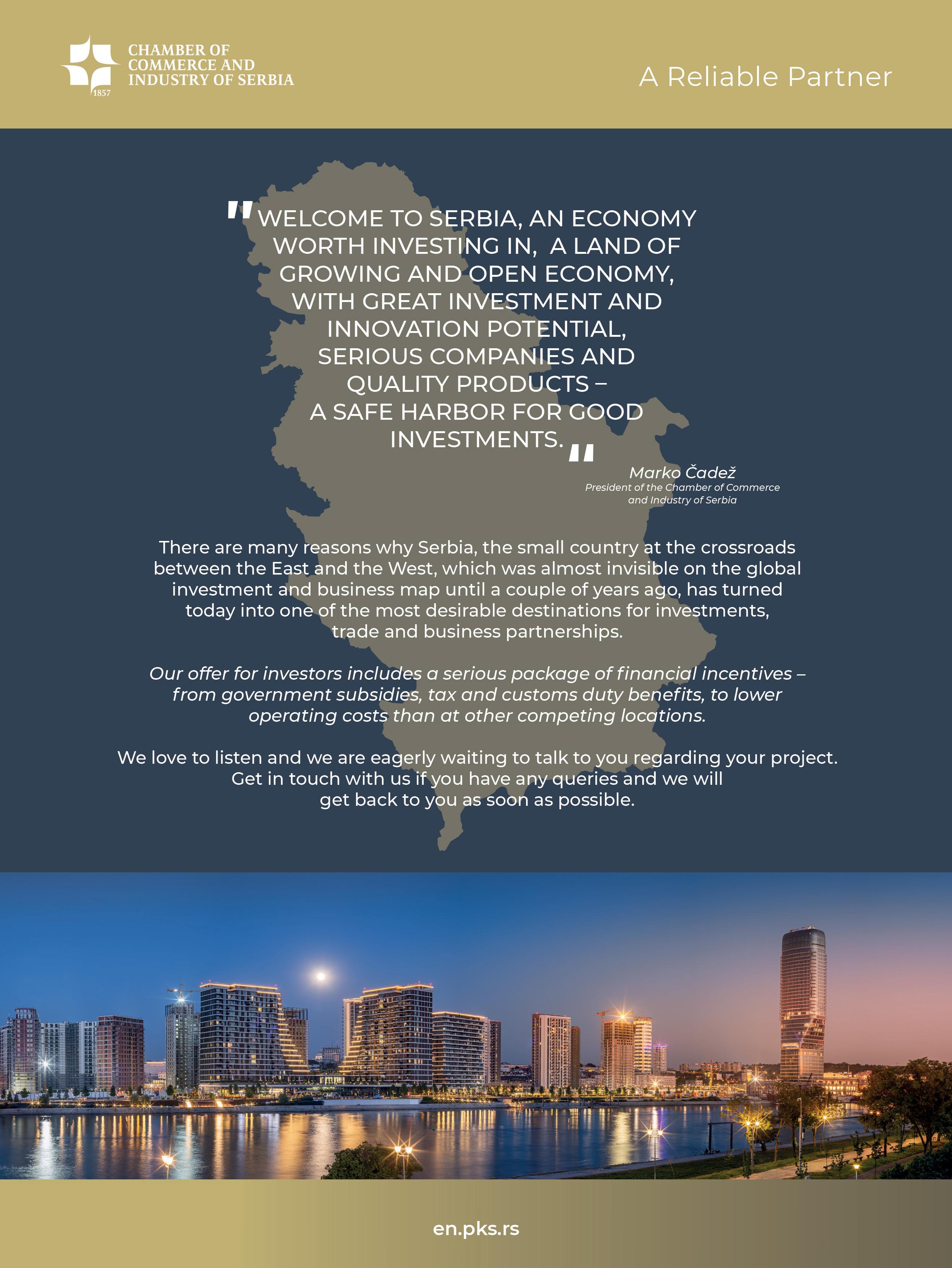

According to city architect Marko Stojčić, the development of capital infrastructure projects such as the metro and new bridges across the Sava and Danube, the need for three million square meters of new office space, and the great potential for the development of hotel capacities and commercial content represent an exceptional opportunity for fresh and profitable investments in Belgrade over the next 10, 20 years
By: GORDANA KNEŽEVIĆ MONAŠEVIĆ Photo: CITY OF BELGRADEWith nearly two million residents, a perfect geographical position on two rivers, and accelerated economic development that sets it apart as the business epicenter of the Western Balkan region, Belgrade has been high on the radar of major investors in recent years, who have recognized its potential, especially in the construction and real estate industries. City architect Marko Stojčić, who was recently elected to this position for the second time in a row, gave us an overview of significant infrastructure developments in Belgrade that provide chances for fresh investments and city locations that are available for the development of new mixed-use projects.

In recent years, Belgrade has become the largest construction site in Europe, with ongoing capital infrastructure projects that significantly open opportunities for new investments. What are the most important infrastructure projects, and what do they mean for the further development of Belgrade?
— There are a large number of infrastructure projects that are currently being developed in Belgrade. The biggest and most important is
certainly the construction of the first two lines of the metro system. In addition to its value in terms of funds, this project has enormous importance for the development of the entire city of Belgrade as the capital of Serbia. Metro lines are also important for the decentralization of the city itself. Their most important function is to help stabilize the traffic needs of the capital and thus automatically enable a more even development of the city.

Also, I want to draw attention to the construction of two bridges of exceptional importance, one over the Sava River and the other over the Danube, on Ada Huja. By building these bridges, Belgrade's connectivity and transitory movement will be improved. Moreover, a tunnel through the city's core is planned, allowing for a decrease in the number of cars in the area.

Moreover, work is being done to develop the sewage and water supply networks in order to provide high-quality infrastructure to every area of Belgrade.
One of the major initiatives the City of Belgrade is working on is the construction of a 4.6-kilometer-long line park that will provide us with a recreation area in the heart of the city. The line park will practically connect the Sava and Danube banks, that is, Ada Cignalija and Ada Huja; one can walk from one forest to the other. The entire zone will be designed in the style of New York's High Line. Over its whole length, the zone would unite cultural, educational, sports-recreational, and commercial areas. The park will include pedestrian and bicycle paths, exhibition and festival plateaus, skating rinks, children's playgrounds, outdoor sports
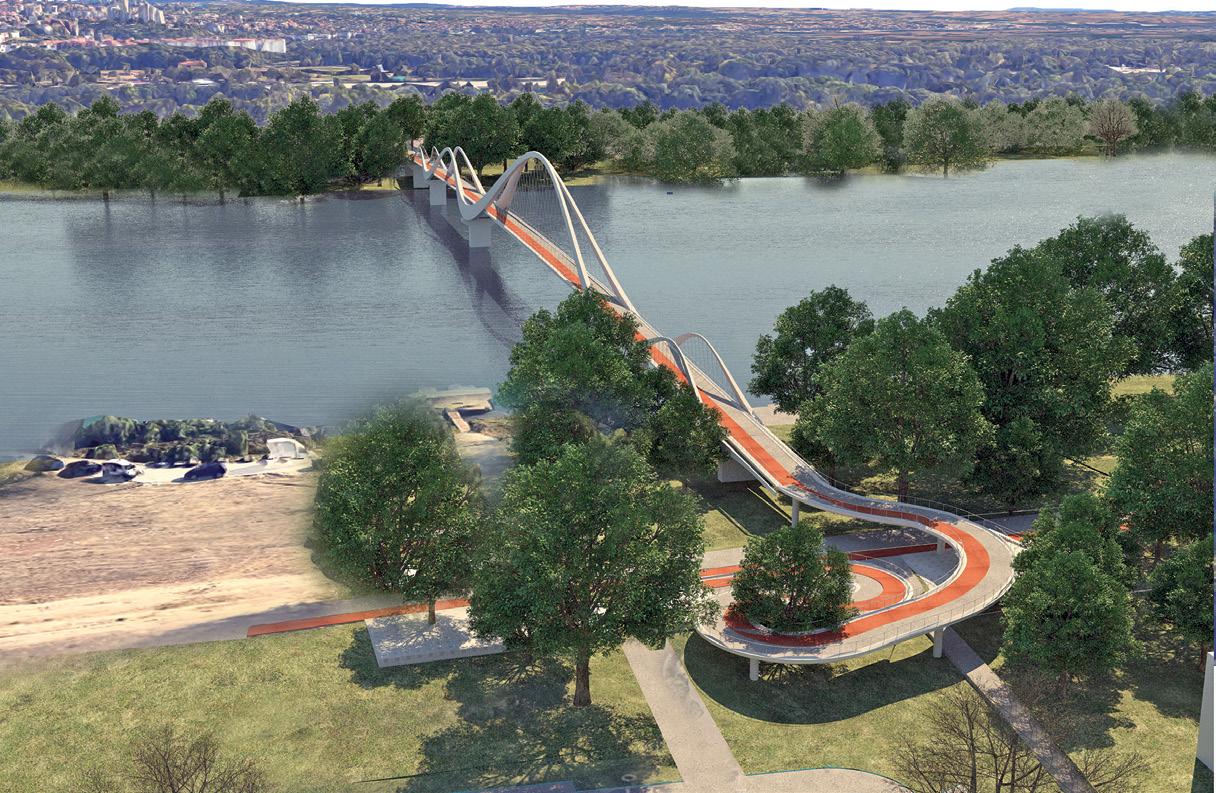
fields, trim tracks, a skate park, cafes, restaurants, art pavilions, and educational centers. The project has already started, and it will likely take three years to complete.
Foreign investors no longer see Serbia, and especially Belgrade, as a curiosity but as a growing market with significant long-term potential. Which foreign investors have so far recognized Belgrade's potential and had an impact on its intense construction boom
— There is a lot of pressure from investors on the City of Belgrade in search of vacant locations, which are becoming increasingly scarce. But we can confirm that there are still locations available for investors. I would highlight, first of all, locations for commercial purposes as well as locations for some other purposes, such as student camps or some specialized commercial centers. This is something Belgrade lacks, and it has a long-term perspective. Israeli in-

vestors are leading the way, along with investors from the UAE. They have been present in this market for some time, and there is no indication that they will leave. On the contrary, it is evident that they are committed to keeping up their investment and searching for new sites to build the facilities and projects Belgrade needs.
Between 200,000 and 300,000 square meters of office space are constructed each year in Belgrade, and it is predicted that as many as three million square meters will be built over the next decade. Is this perhaps the sector that foreign investors are most interested in, and what can the City of Belgrade offer them as the best opportunity in the coming period?
— We believe that Belgrade's greatest potential lies in the development of office space and other commercial facilities, such as hotels. Given that during the previous decade we mostly had investments in residential buildings, we believe that these figures, which are measured in millions of square meters in potential investments in office and commercial space, are something that is very realistic and neces-

sary for this market. Especially in light of Belgrade's accelerated development and rapid return to the position of most important city in the Balkans. The ratio between residential and commercial buildings is still strongly in favor of residential, but I expect it to equalize in the coming years. Several city municipalities have openings for new square meters of office space. Of course, New Belgrade is the most in the focus of investors. As for the city center, there is mostly a trend of reconstruction of old office buildings that are being converted into ultra-modern business centers according to the highest standards of sustainable construction and energy efficiency.
With regard to the new General Urban Plan and the city's development over the next 20 years, which areas in Belgrade, generally speaking, are open to new real estate investments, and for what specific purposes?

— When it comes to residential construction, I must state that we are not planning such an intensive development that would imply a dramatic expansion of the city. We will try harder to fill some unurbanized parts within the city borders. As a city planner, I can recommend Makiško Polje as a vast area with the greatest potential, given that the first metro line passes there and that the rivers Sava and Ada Ciganlija, as the most important picnic spot in Belgrade, are in the immediate vicinity.
The General Urban Plan is scheduled until 2041; it is being worked on two decades in ad-
vance, and it gives a completely clear answer to everything—how and where in terms of space, which purposes will be developed. Our goal is for Belgrade to be a smarter city, with more educated people, where significantly more economic activities will be based on the intellectual industry. In this sense, we have introduced a new urban purpose called the "intellectual industry." We will have hubs of various kinds, business centers where intellectual services are provided, not only for Serbia but for Europe and the world. We expect that in the next ten years, the development of those business com-

WE BELIEVE THAT BELGRADE'S GREATEST POTENTIAL LIES IN THE DEVELOPMENT OF OFFICE SPACE AND OTHER COMMERCIAL FACILITIES, SUCH AS HOTELS
plexes will take precedence over other industries in Belgrade. First, because it is cost-effective and something that involves the least consumption of the city's resources. This is how we developed the General Urban Plan, which is based on a significantly larger number of facilities for cultural purposes, more recreational and green areas, and a better traffic network based on the metro system and the BG train.
If it wins the candidacy for the organization of Expo 2027, Belgrade has a ready urban plan for the construction of new facilities that would meet the highest standards for hosting such an important event. What do these projects include?



— The National Stadium in Surčin, south of the Nikola Tesla Airport, is the first of several pro -
jects in a series that define a new area that will be urbanized on the western borders of Belgrade, around the highway bypass. Preparatory work on the construction of the National Stadium has already begun, and the construction of a complex that could be the venue for Expo 2027 will begin very soon if Belgrade wins the organization of this major event in June. It will be of great importance both for the region and for countries on other continents. It will show that Belgrade, in terms of potential, is a city worth investing in in the next 10 or 20 years and that it makes sense to establish companies' headquarters in this area because from here they can operate with both the East and the West. The organization of Expo 2027 would certainly bring a great benefit in every sense to Belgrade and all of Serbia.
According to Vladimir Popović, Managing Partner at Colliers Serbia, Serbia's real estate market has experienced significant growth in recent years in both residential and commercial real estate, providing excellent prospects for further development of industrial and logistical capacities due to the nearshoring trend

 By: JOVANA NIKOLIĆ
Photo: MILOŠ LUŽANIN
By: JOVANA NIKOLIĆ
Photo: MILOŠ LUŽANIN
All reports and research indicate that the Serbian real estate market kept up its upward trend of growth in 2022, despite turbulent times and global crisis circumstances. We asked Vladimir Popović, Managing Partner at Colliers Serbia, what are the prospects of the real estate market trends in the coming period and what are the most promising sectors and most attractive opportunities for further real estate developments and investments.
What, in your opinion, are the key components of the last year's balance sheet that indicate Serbia is on the radar of major investors and will remain a Europe's hot spot in the coming period?
— In general, some of the key components that investors may look at on a country's balance sheet include economic growth, political stability and infrastructure. A country with a strong and stable economy is more attractive to investors. Economic growth can be measured by factors such as GDP growth, employment rates, and inflation. Investors may also consider a country's debt-to-GDP ratio as well as foreign reserves. Political stability provides a predictable and stable environment for businesses to operate in. Investors may also look at a country's infrastructure, including transportation, telecommunications, and energy systems, as this can impact the ease and cost of doing business. The best evidence that Ser-
bia satisfies all of these criteria to a high degree is the fact that it has experienced a record inflow of foreign investments for several years in a row and that major international companies have recognized the investment potential of this market.
In the real estate market, residential construction has been by far the most expansive, followed by the intensive construction of
state-of-the-art office buildings, but what makes Serbia increasingly attractive are the opportunities for the construction of industrial and logistics parks. Which of these three industries has the greatest upside potential and deserves investors' attention?
— Each of the three industries mentioned can have its own unique potential and challenges for investors. Residential construction can offer high and short-term returns, as there is always a need for housing. However, there may be challenges related to finding the right location and ensuring that the market demand is sufficient to support the investment.
Office building construction can also offer attractive returns, particularly in growing urban areas where demand for office space is high. The Belgrade office market reported a booming 2022 with strong pipelines. However, there may be challenges related to competition from existing office buildings, the need to stay up to date with the latest technology and amenities, and the future application of ESG standards.
Industrial and logistics park construction may have significant potential due to the trend towards nearshoring, as more companies are looking to bring manufacturing and supply chain operations closer to their customers. However, there may be challenges related to finding the right location and ensuring that the infrastructure is in place to support the development. EMEA manufacturing opportunities for Serbia are: automotive, FMCG, electronics, semi-automated, manual components, and 2-3 days to customers.
Serbia has a long tradition of industrial production and is one of the largest economies in the Western Balkans. The country has a strategic location in Europe, with access to key markets in the region and beyond, making it an attractive destination for investors looking to expand their businesses in the industrial sector. The industrial sector in Serbia is diverse, with strengths in sectors such as automotive, food and beverage, metal processing, and chemicals. There are also opportunities for investment in other areas, such as renewable energy and information technology.
Colliers has a long presence in the entire region. How would you rate Serbia's real estate market, its values, and its prospects for further growth in comparison to the markets of the surrounding countries?
— Serbia's real estate market has been developing rapidly in recent years, particularly in the major urban centers such as Belgrade, Novi Sad, and Niš. The market has seen significant growth in both residential and commercial real estate, with a particular focus on high-end properties and state-ofthe-art office buildings.
Compared to the markets of the surrounding countries in the region, Serbia's real estate market may offer attractive opportunities for investors. The country's relatively low labor costs, strategic location at the crossroads of major trade routes, and relatively stable political environment may make it an attractive destination for foreign investment in real estate. Additionally, the country has been making significant efforts to attract foreign investment in a variety of sectors, including real estate.
However, as with any market, there are also risks and challenges to consider. For example, Serbia's real estate market may be susceptible to fluctuations in the global economy, and there may be regulatory and legal hurdles that investors need to navigate. Additionally, there may be competition from other countries in the region that are also seeking to attract foreign investment in real estate.
Based on your clients' experiences, what can you tell us about what makes Serbia safe and attractive for capital markets and real estate investments, even in these turbulent times and under these global crisis circumstances?
— One key factor is Serbia's strategic location at the crossroads of major trade routes. The country's relatively low labor costs and skilled workforce can also be attractive to investors seeking to establish operations or develop real estate projects. Another factor that may make Serbia attractive to capital markets and real estate investors is the government's efforts to create a favorable investment climate. In recent years, the government has implemented a number of policies and initiatives to encourage foreign investment, including tax incentives, streamlined regulations, and improved infrastructure.
SERBIA'S REAL ESTATE MARKET HAS BEEN DEVELOPING RAPIDLY IN RECENT YEARS, PARTICULARLY IN THE MAJOR URBAN CENTERS SUCH AS BELGRADE, NOVI SAD, AND NIŠ
The economic support measures of the Government of the Republic of Serbia and high inflows of FDIs contributed to a large extent to maintaining of the private sector’s liquidity, and preserving of employment both in 2021 and 2022.


The global slowing, which is caused by the COVID 19 pandemic and the Ukrainian crisis, has had fewer negative effects on Serbia if compared to most European countries, primarily due to the economic structure and macroeconomic stability .
Inflation was intensified during the first months 2022 because it was primarily induced by happenings in the global market and war conflicts in Ukraine, and the National Bank of Serbia expects it to be returned soon within the limits of the target interval.
• The market is dynamic, susceptible to various influences and it is changing accordingly
• The demand for properties not just residential hasn’t diminished in Serbia
• Serbia, or Belgrade more precisely, holds a record in real estate value in the region

• The total amount of money on the real estate market last year amounted to 6.1 billion euros, which is a 47% increase compared to 2020
• The data show a slight increase in property turnover compared to last year and record amount of money on the real estate market the volume of money has increased by 25%
• The most expensive property was sold in Belgrade so the largest amount of money was traded in the City of Belgrade
• The real estate market in Serbia experienced a record demand for office, logistics and residential space moreover, it is expected that this growth trend continues in 2023
The real estate market’s overall value saw record growth in 2022 by 36 percent y.o.y. or 12 percent in the final quarter of the year.
 Vladimir Popović Managing Partner, vladimir.popovic@colliers.com
Emilija Mirković Market Research Analyst, emilija.mirkovic@colliers.com
Vladimir Popović Managing Partner, vladimir.popovic@colliers.com
Emilija Mirković Market Research Analyst, emilija.mirkovic@colliers.com
When looking at the total number of office stock, New Belgrade (CBD) remains the most dominant submarket. However, given the current supply and the newly added office buildings at the

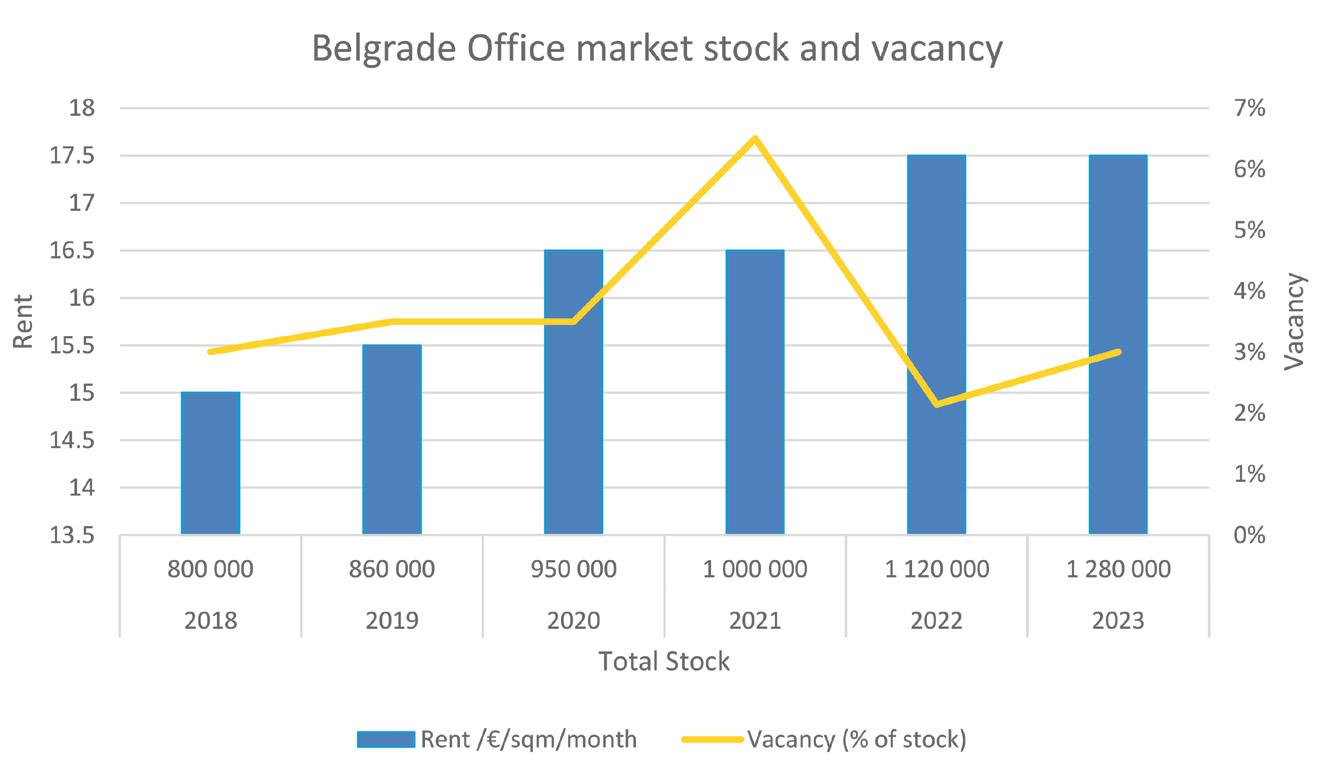

beginning of this year, we may conclude that the city center is becoming more and more popular both among developers and companies; especially the ones that are new to the market.

We are committed to our vision, which includes innovation, functionality, and ecosustainability. Four new projects—Sava Centar, Delta Iron, Delta Land, Delta District—are examples of this commitment, says Miloš Grdinić, Development and Asset Management

 By: JOVANA NIKOLIĆ
By: JOVANA NIKOLIĆ
Serbia has long been recognized globally as a growing market and one of the most attractive destinations for foreign investors. Regarding domestic investors, one company stands out due to its construction standards, implementation concepts, and innovative solutions: Delta Real Estate. We interviewed Miloš Grdinić, Development and Asset Management Director, to find out why they are the leading company in the real estate industry in Southeast Europe.
You joined Delta Real Estate at the beginning of the year, but it is interesting that you were once an employee of the company. What were the key factors that led to your decision to return and contribute to the development of the company with your experience?
— Personal and professional growth is a priority in my life and I always knew that my path led me where the conditions for advancement were most favorable, which is actually the key reason for my return to Delta Real Estate. It is very important for me to participate in the improvement of a company that promotes green building principles, along with people who love their jobs. We are all witnessing catastrophic climate change. I believe that socially responsible business management should take a leading position in business strategies. I am pleased to have the opportunity to work again with enthusiastic and innovative people who believe in what they do. After researching the market throughout the region, the conclusion was clear: continuous development to the level of global standards is precisely the case in Delta Real Estate.
Green building is becoming increasingly important in today's world, and Delta Real Estate stands out for promoting this approach. What is new that you have introduced to the Serbian market?
— The initial wave of green building in Serbia has been initiated. I am happy to say that I work for a company that drives socially responsible investments. We are one of the first companies in Serbia to meet Gold LEED certification standards through our projects. The Delta House building,
which represents the home of the Delta Holding corporation, has precisely that certificate. In line with maximum environmental protection, we have implemented highly efficient systems and introduced state-of-the-art technological solutions: a rainwater tank, bipolar ionizers for air purification, solar panels, and plastic balls as an easy concrete structure. The greenery area, with over 1,300 m2 on the roof of the building and plot, is larger than the Delta House building itself. In addition to building new facilities, we have started projects in the field of building reconstruction that are of cultural and historical significance to Belgrade and Serbia. The mentioned projects will follow global ecological standards, thereby making existing buildings energy-efficient and compliant with sustainability requirements, contributing to the fundamental revitalization of Serbia within the real estate industry.
Delta Real Estate recently announced plans to begin several large projects. Can you tell us more about these projects and what makes them unique?
— We are committed to our vision, which includes innovation, functionality, and eco-sustainability. Four new projects— Sava Centar, Delta Iron, Delta Land, Del-
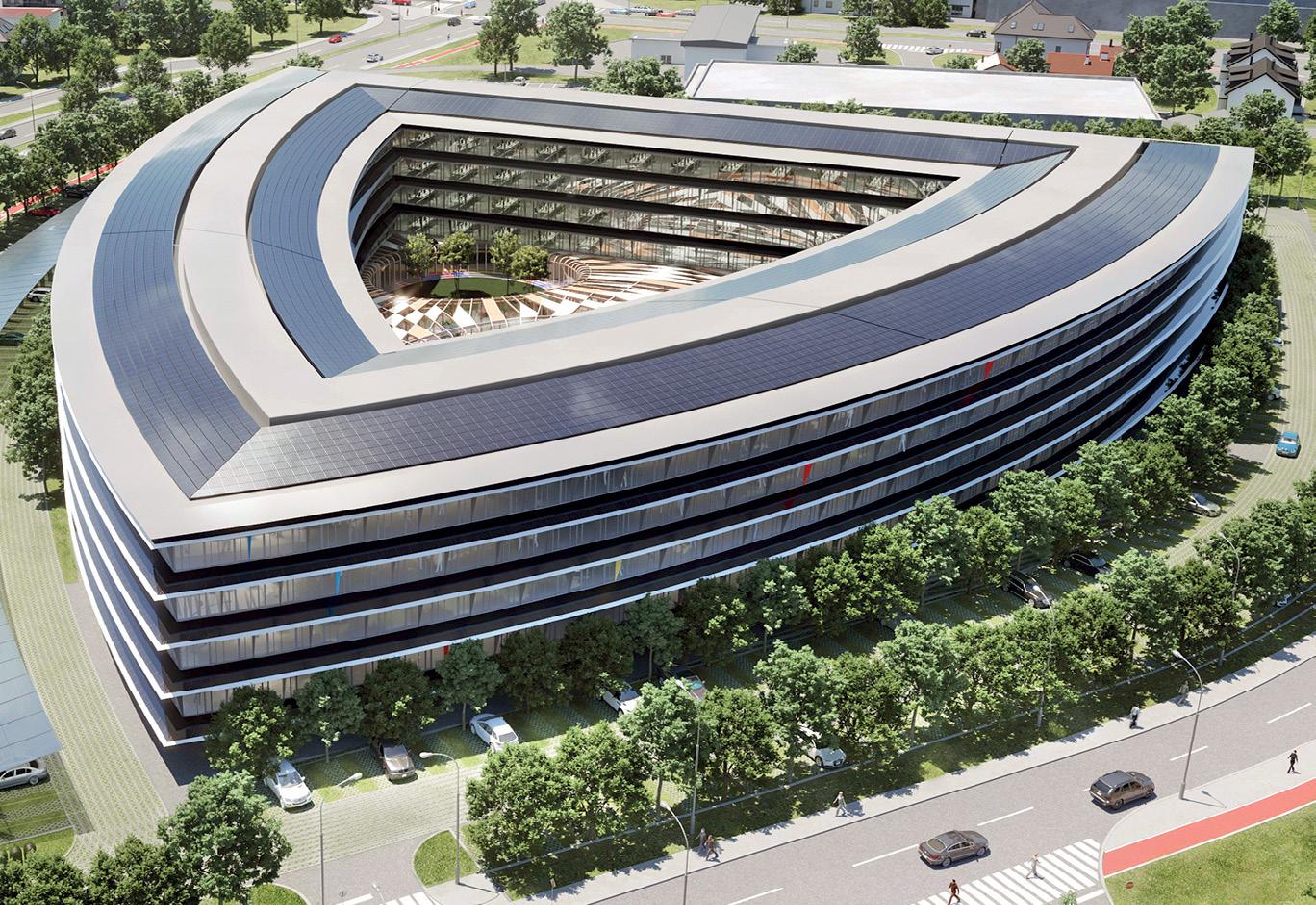
ta District—are examples of this commitment. I would like to highlight Delta Iron, a business complex located in Novi Sad, designed as a group of four buildings with a total area of 40,000 m2. With the unique shape of this complex and green construction, we contribute to the modernization of the city. The tenants' interest in commercial spaces clearly indicates a demand for office spaces in Belgrade, and Delta District complements this market with three new A+-rated buildings. In the first part of the project, we will realize more than 45.000m2, of which more than 20.000m2 will represent the first office building built in this complex. Each individual office will be
for this year. It is a mixed-use project, which marks our company's return to residential construction, and in addition to modern apartments on 138,000 m2, this location will also have a business portion of 30,000 m2 and retail space of 19,000 m2. Our goal is to provide citizens with a better quality of life in an eco-sustainable new settlement that carries the history of Belgrade. The reconstruction of the largest congress center in Southeast Europe at 100,000 m2 is a privilege, and it requires exceptional expertise and precision from our team. Construction is moving along smoothly, and we're on track for the grand opening in November 2023.
unique thanks to the impressive architecture and panoramic views of the capital. In addition to the office buildings, an exclusive 5-star hotel is planned. Sava Center and Delta Land projects are especially important to us as they involve the reconstruction of buildings with exceptional historical heritage. The implementation of Delta Land is planned
Delta Real Estate has a 20-year tradition in the real estate business. How have you adapted to changes, and what are the biggest opportunities for your company in the future?
— The key to our success lies in continuous learning and caring for our employees. Only in 2022 did we increase revenue and EBITDA by over 55% compared to 2021. The success in numbers is only proof of quality management and the expertise of our experts, who are always ready to find innovative and sustainable solutions for our projects. Looking ahead, we believe that the greatest opportunities lie not only in the reconstruction of buildings with cultural and historical significance but also in carefully listening to the market's needs and developing projects that meet those needs at the highest level. Additionally, we see immense potential in continuing the development of environmentally-friendly projects in line with the highest global ecological standards, which will further drive modernization and sustainable development in Serbia.
WE ARE ONE OF THE FIRST COMPANIES IN SERBIA TO MEET GOLD LEED CERTIFICATION STANDARDS THROUGH OUR PROJECTSDelta Iron, a business complex located in Novi Sad
The new concept of the iconic Belgrade event and congress center will bring business, entertainment, and life back to this facility, positioning Sava Center as a strong initiator of the congress industry in the region
 By: JOVANA NIKOLIĆ
Photos: DELTA REAL ESTATE
By: JOVANA NIKOLIĆ
Photos: DELTA REAL ESTATE
The news about the Sava Center opening in November 2023 sensationally echoed throughout Europe. Sava Center, the largest congress, cultural, and business center in Southeast Europe, is restoring its former shine day by day. The investment in the reconstruction of this building will amount to over 100 million euros, and the invest-
ment company Delta Real Estate points out that the value of the Sava Center reaches far beyond the borders of our country. The new concept will bring business, entertainment, and life back to this facility, and at the same time, Sava Center will become a strong initiator of the congress industry in the region.
The reconstruction of the building, which covers 100,000 square meters,
takes place in two parallel phases. First, facility A will open its doors and present a rich business and commercial zone, as well as a congress zone with significant improvements. The modern and interior-enhanced congress zone will offer more than 40 meeting rooms, the main congress hall with 1,100 seats, and a unique immersive hall with the latest audio and visual technology. The
uniqueness of this space has been recognized by event organizers around the world. Already in the first months, the Sava Center will host national and international congresses that will gather thousands of people at the same time, and many companies have chosen to organize their conferences, presentations, seminars, and corporate celebrations right in the Sava Center.
The fact that Sava Center is becoming a first-class business center is also shown by the fact that a large number of global companies have decided to locate their offices in this building. The investors point out that more than 60% of office space has been leased and that the most interesting office spaces are the ones with private green terraces. In addition to the proximity to the city center and the most important roads, the key
advantages of business premises in Sava Center are maximum flexibility, different square footage, impressive architecture, and a large selection of parking spaces. Thanks to the commercial zone, company employees as well as fellow citizens will finally have a place where they can do everything under one roof. World-famous retail chains will open their stores on the lower ground floor of the building, while the main floor will feature luxury brands, the best from the world of fashion, and an exclusive restaurant. There is every possibility that the Sava Center will once again become the central place for events in Belgrade.

We can expect the first concerts, film premieres, and ballet performances only a few months later, in the first half of 2024, when the plan is to open Building B, where the Blue Hall is lo -



cated. To our great joy, the capacity of this hall will be greater, and now it will be the largest auditorium in the region with 3,800 seats.
In addition to the preservation and modernization of the facility and in accordance with Delta’s business policy, great emphasis was placed on increasing the facility’s energy efficiency. The recognizable glass envelope will consist of three-layer glass with an exceptional solar factor, while solar panels will be implemented on the roof of the building, which, along with LED lighting, will lead to significant savings in electricity. The facility conceived in this way promises the highest rating of sustainability and energy efficiency, and as a confirmation, it will have the BREEAM certificate. As such, it will serve as an inspiration for many other congress centers.

K3, the first completed building of the future Green Escape business complex, opened in September 2022, is the latest jewel in the portfolio of the IMEL Group, which has been synonymous with top-quality construction and the development of modern New Belgrade for the past five decades
 By: JOVANA NIKOLIĆ Photos: IMEL GROUP
By: JOVANA NIKOLIĆ Photos: IMEL GROUP
Ever since the IMEL Group made preliminary design of the Bežanijska kosa settlement in the early 80s, the company has not stopped with its mission of an innovative approach to the development of New Belgrade, which they have just crowned with K3 – the first completed building of the future Green Escape business district.

Already renowned as New Belgrade's new business oasis, Green Escape is designed to be a state-of-the-art business complex and an ideal place for quiet and productive work in a green environment on the edge of the urban zone. The complex is located in Block 51 in New Belgrade, next to the E75 highway and in the immediate vicinity of the Nikola Tesla Airport, and is well connected by transport links to the city center, which is only 5.5 km away.
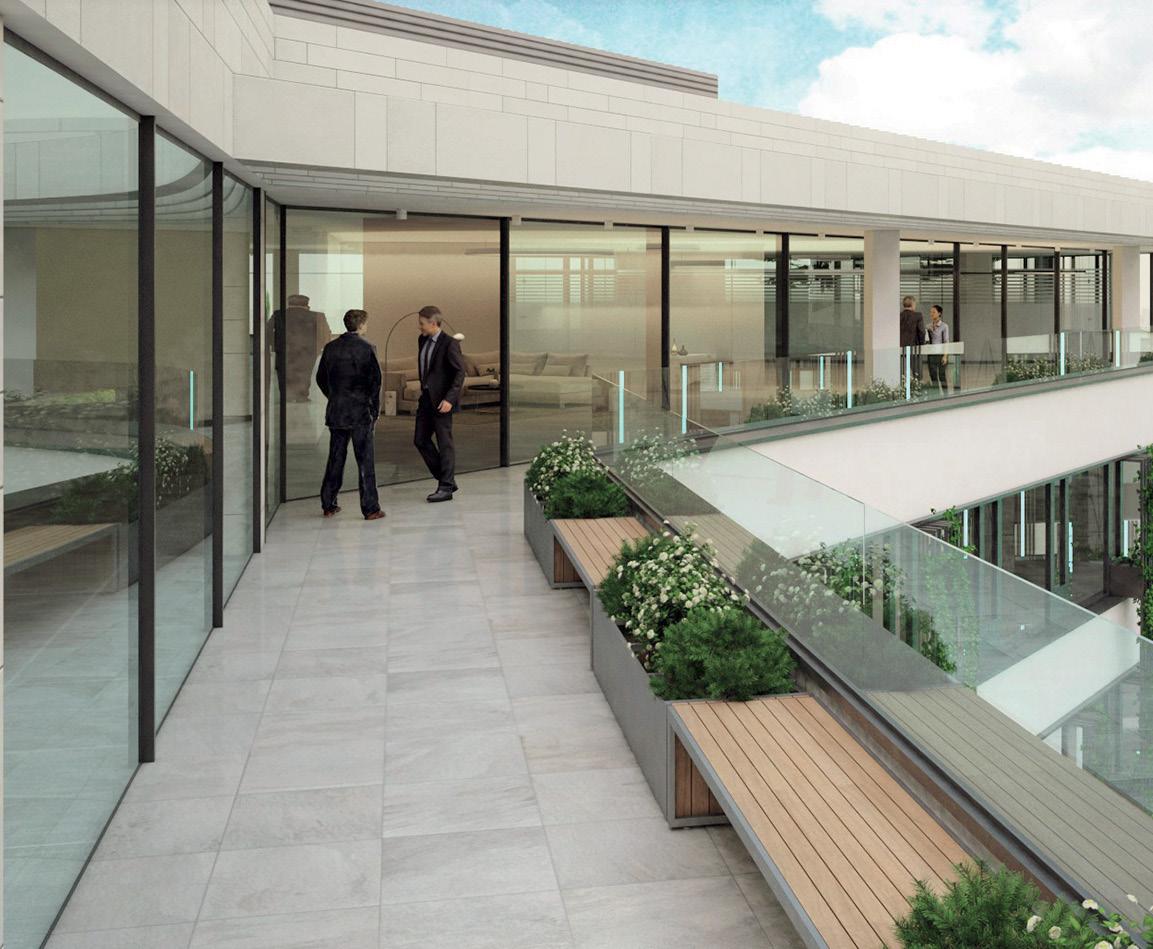
Already open for tenants, K3 represents a unique symbiosis of modern architecture and nature, providing comfort and functionality through a perfect combination of quality and carefully thought-out design. Top-quality construction, advanced technical systems, predominantly glass surfaces on the facade, and windows that open in all offices, as well as carefully designed additional facilities that
MIRKO UROŠEVIĆ Owner and CEOSince the very beginning of our business in the early 80s, the New Belgrade market has given us the chance to raise the standard through the planning and development of commercial and residential buildings. As a result, we left behind a number of reference buildings that are still significant landmarks in this part of the capital. The Green Escape complex represents the crown of development and the flagship of our rental portfolio. We anticipate that the trend of improving the business climate for investors will continue in our market and that Belgrade will get more projects of this quality.
As a company with long and prolific building expertise, we believe that it is necessary to maintain tradition and reputation as much as it is necessary to constantly seek out fresh information and adopt new trends. That is why we are proud of the fact that our name has been used as a synonym for quality construction for five decades. We respect our environment and especially our competition. Every new project, theirs or ours, we see as an opportunity to upgrade our knowledge and improve our construction standards.


THE ENTIRE GREEN ESCAPE COMPLEX IS BEING DEVELOPED AS A NEW CITY BUSINESS DISTRICT, WHICH OFFERS MANY BENEFITS, TAILORED MADE DESIGN AND ADDITIONAL VALUES COMPARED TO THE STANDARD OFFER OF OFFICE SPACE IN BELGRADE
will provide tenants with numerous benefits, were imperatives during the design phase.
The building has up-to-date technical systems, especially when it comes to the ventilation and airing systems of the building, which provide a healthy working environment. Tenant companies have the option of organizing the work space in accordance with their needs and business development thanks to the flexible space organization option that ranges in square footage from 505 m2 to 1,580 m2 on five floors, with a total area of 14,000 m2.
Green spaces and fountains will enable staff to take a break from work and enjoy the outdoors, while the spectacular entrance portal and lobby with a double-floor height provide a notable effect.

The entire Green Escape project is intended to become a synonym for a modern, contemporary, technologically advanced, but also healthy, rational, and sustainable work environment tailored to modern man. Its design and construction represent a step towards the future in the development of the business environment in the Belgrade real estate market.
An urban organic concept of the whole complex is reflected in the combination of green-
ery and natural organic materials, on the one hand, as well as the recognizable urban atmosphere of the Soho style, interpreted through the organization, form, and materialization of open spaces and the facilities themselves that form the district.
All three buildings in this complex are designed as modern, technologically advanced, and functional office premises that, within their capacities, can quite flexibly accommodate various program contents within the framework of commercial activities and meet all the specific requirements of future clients. In this way, the client gets a technologically advanced, tailor-made space.
The entire complex is being developed as a new city business district, which offers many benefits and additional values compared to the standard offer of office space in Belgrade. A wide range of additional content includes hotel facilities, business apartments, conference rooms, offices for rent, a spa center with

IMEL Group was founded in 1981 as a private company. The company's operations involve engineering, design, planning, and construction of facilities for both the market and renowned investors or clients. As a developer, the company is constantly working on the research and development of new locations.

In addition to their well-known engagement in the construction of New Belgrade, IMEL professionals have worked on projects in Sweden, Russia, Turkmenistan, and Kazakhstan. Today, IMEL Group is a modern company that successfully continues its development in accordance with market requirements. The company is synonymous with quality, following and applying modern technological solutions in all activities in order to achieve the highest standards of products and services as well as the satisfaction of its clients.
Imel Properties was founded in 2010. as a property management company handling full spectrum of services for our own as well as properties built for our clients.
a swimming pool and all the accompanying facilities, sports facilities and fields, running tracks, babysitting services, shops and services, and more. The very ambiance and surroundings of the business district represent a new city corner with a landscaped square, decorative greenery, water surfaces, fountains, and lots of open and closed space for sitting, relaxing, and informal business.

After the K3 building was completed last year, IMEL Group is planning to develop the multifunctional K2 building in 2023, which will include a four-star hotel, additional retail and catering spaces, and additional office space for rent. Parallel negotiations for the custom construction of an office building on Plot K1 are ongoing with a reputable international company.

IMEL Group d.o.o. Bulevar Zorana Djindjića 2a 11070 Novi Beograd +381 11 20 18 900, +381 11 20 18 902 +381 11 311 28 21 office@imel.rs, www.imel.rs
MPC Properties is one of the biggest and most experienced real estate platform in SEE region, with the business grounded in investment, development and management of assets
By: JOVANA NIKOLIĆ Photos: MPC PROPERTIESSince the company's foundation in 2002, MPC Properties has developed over 30 projects totaling GBP 1.5 million m2, which became exemplars and role models in the global real estate practice as well as important landmarks and community centers for the society they are part of.
MPC Properties is the owner of the largest network of shopping centers in Serbia: Ušće,
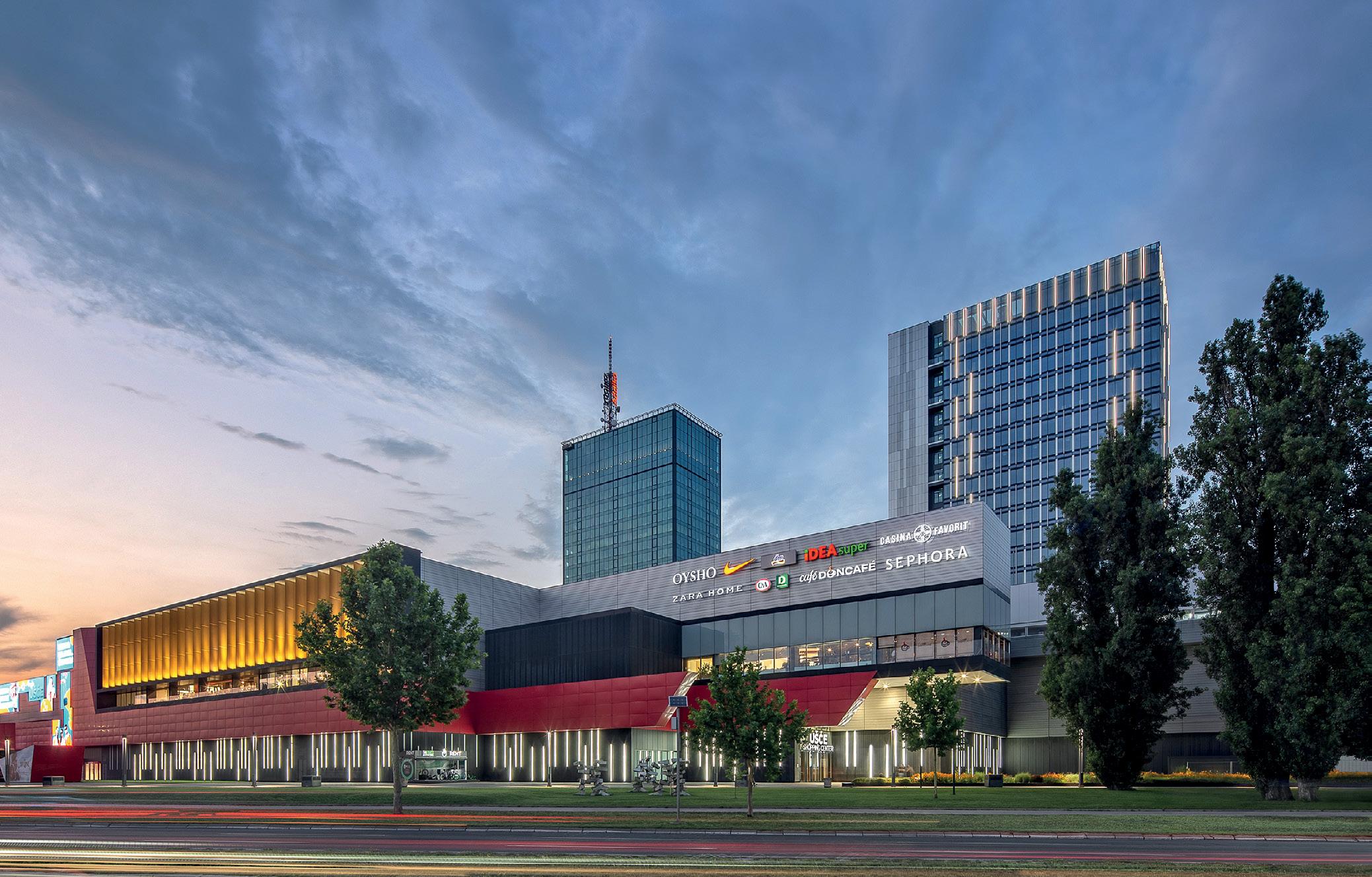
BEO, Mercator, Delta City, and Immo Outlet Center, as well as six prime office assets: Ušće Business Complex, Navigator Business Center, TLD, and Plaza Prima.
With its’ contacts and extensive deal experience, MPC Properties is building a network of stakeholders and an instant business community, which is setting the bar high when it
comes to the business opportunities in the whole region. Partnership and mutual support are the key principles of cooperation with tenants, banks, investors, and other stakeholders in order to gain a common understanding and have a clear plan for joint success.
MPC Properties is developing modern A-class office properties in the best locations, providing the tenants with easy connections to all parts of Serbia's capital, Belgrade.
In order to give new possibilities to the tenants in shopping centers, MPC Properties is constantly developing new leasing concepts for effective business solutions—from pop-up stores to using shopping centers as media together with its’ own channels.

The goal of the company is to bring the best possible experience to the users of its’ assets. In MPC Properties’ shopping centers, the experience is enhanced on multiple levels: from the trendy tenant mix, pleasant ambience, F&B offer, easy parking that includes eco-stations, entertainment content, and events, to the special synergy between digital and physical through the loyalty mobile application Tvoj centar.
When it comes to the office portfolio, all retail tenants are carefully chosen in order to provide the best possible choice of restaurants, fitness centers, kindergartens, cafes, and other amenities important for business users, giving them a memorable experience of the new age of office space.

MPC Properties' indisputable success can be attributed to the company's unwavering commitment to providing the most innovative real estate project solutions on the market. The difference is made with its’ dedication to green building and more eco-friendly business solutions in order to bring an efficient and sustainable portfolio to the community and create long-term value for all stakeholders. MPC Properties projects are in compli-
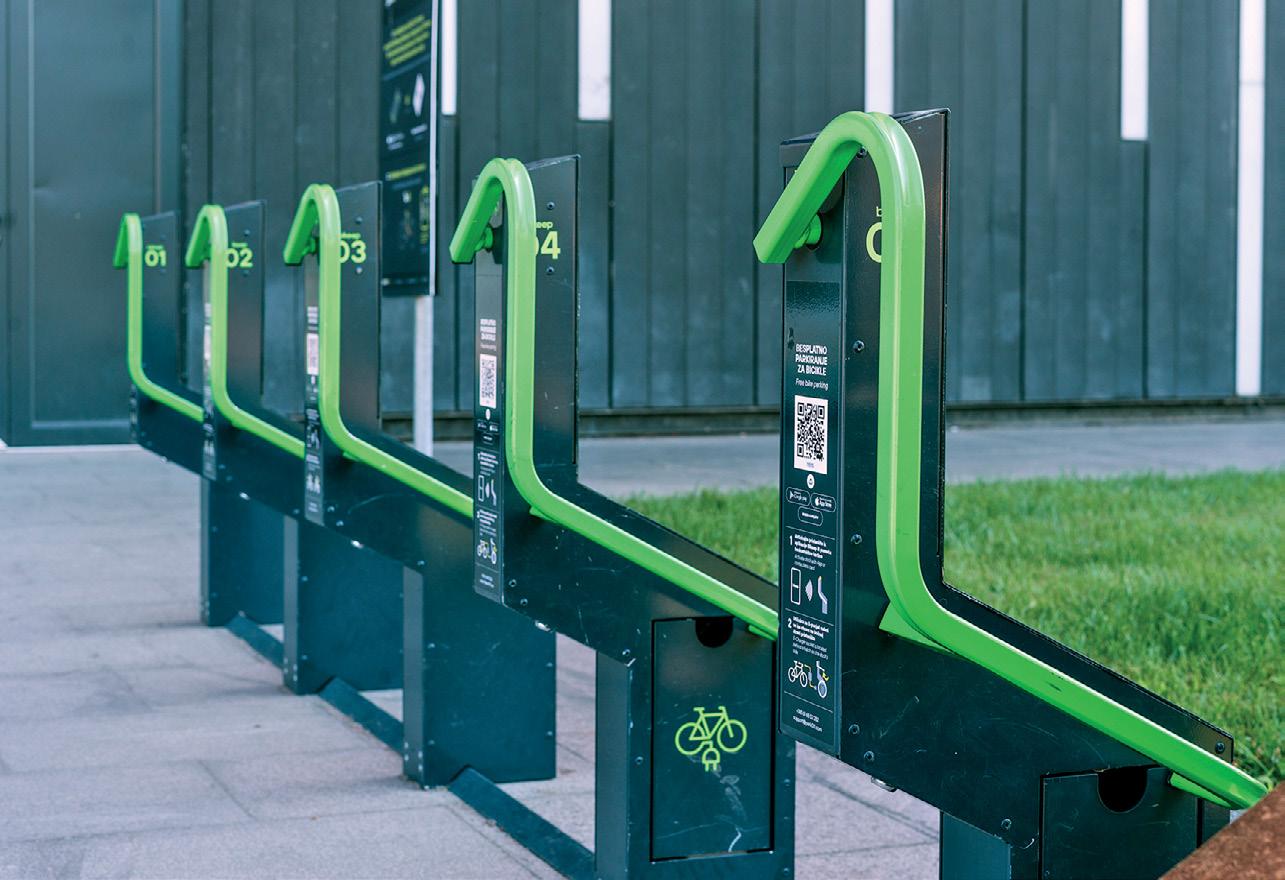
MPC PROPERTIES' VISION IS TO BUILD COMMUNITIES SO THAT EVERY MEMBER CAN ENJOY PROSPERITYBEO Shopping Center Interior Parking station and chargers for eco vehicles in front of Ušće Shopping Center Urban beekeeping – beehives on the green roof of Ušće Complex
ance with ESG (Environmental, Social, and Governance) goals, and assets in the portfolio are certified to the most prestigious LEED and BREEM standards. It is the first company on the market to gain "Wellness, Health, and Safety" certification for the whole portfolio, putting the well-being of the end users first.
The business goal of MPC Properties is to give the best possible experience to every single person who spends time in its’ assets, including partners and stakeholders. It is strongly committed to developing high-quality buildings, providing the best management service, enabling an optimal tenant mix, and creating impressive and meaningful events. All of that is strongly connected and executed in line with our ESG strategy, making the company the leader in innovative real estate experiences.



Increased investments in office and logistics space, hospitality, and retail facilities are expected in the Serbian real estate market. These are all sectors in which NOVASTON's expert teams can help investors recognize and use the region's potential, according to Mia
With more than 40 strategic projects in its portfolio and half a million square meters of area managed by nearly 100 employees, NOVASTON is a unique real estate platform for providing asset management, facility management, and marketing consultancy services in Serbia and the region. We talk with Mia Zečević, owner and CEO of the company, about the regional property market trends and opportunities for fresh investments.

NOVASTON is one of the leading asset management companies in the Western Balkans region. Which sectors are in the focus of your business, and what references have recommended you to renowned clients?
— NOVASTON is a well-known brand in the retail sector, and in recent years, we have strategically expanded our operations in Serbia and the region in the sectors of office space, logistics, and hospitality. The success of the entire team, made up of experts with decades of local and international experience, is based on reliability and a unique and professional approach to each client. Fostering authentic values and preserving the quality of services even in times of crisis has enabled us to have renowned international clients such as Ikea, Schneider Electric, CPI Group, BIG CEE, et al. We constantly monitor trends, such as smart technical solutions and renewable energy sources, and encourage partners to do the same with our assistance. Thus, we were engaged in the
BREEAM certification of STOP SHOP parks in Serbia and Croatia, which are part of the CPI Group. We apply innovations in the office space sector as well. I will single out the reconstruction of the Novkabel industrial hall in Novi Sad into a modern development center on 17,000 m2 of gross space for the Schneider Electric Hub, which is in the process of obtaining the LEED Gold certificate. At the same time, we follow all trends in the industry, such as the

development of condominiums and apartment complexes in tourist destinations, and in them we see development chances as well as opportunities for our partners.
In cooperation with the Gecić Law firm, you have created a guide for real estate investments in Serbia that includes the legal and commercial aspects of such an investment. What is the overall conclusion of this guide: how profitable are construction and real estate investments in Serbia, and which sectors are the most promising in the coming period?
— In the “Real Estate Development Guide on the Example of Office Space,” we wanted to provide foreign and local investors, whether they are investment funds, institutional investors, or other legal entities, with basic guidelines and a comprehensive overview of the processes and requirements that must be met for the realization of investments in real estate with the certainty of its profitability. By choosing the sector for this specific case study, we indicate that the office space market is one of the most promising in Serbia, as the offer has increased by 236,000 new square meters in the last two years, especially in Belgrade, Novi Sad, Niš and Kragujevac. The logistics sector has potential; its total stock increased by as much as 16% last year. Excluding the turnover of residential real estate, the most profitable properties are currently those that meet the conditions of being intended for a tenant or user, as well as being energy efficient and independent.
What are the greatest potentials of the Serbian real estate market that can attract new foreign investors, and what are the experiences of the international companies that cooperate with NOVASTON?
— Favorable geopolitical location, a professional workforce, low business expenses, and a strong orientation towards attracting foreign investments have made Serbia an attractive investment destination, especially for industries such as automotive, food, electronics, shared services, and ICT services. This is evidenced by the entry of well-known global brands like Bosch, Michelin, Siemens, Toyo Tires, Microsoft, Schneider Electric, Yazaki, and others.
Even during these challenging years, we managed to maintain a stable market so that capital infrastructure projects and the expansion of the construction industry continue to attract foreign companies, most of which are predominantly from the EU, especially Germany, Italy, and Austria, then from the USA and Asia. The completion of administrative reforms in the country and a more efficient bureaucratic procedure will further complement the investment and business climate for fresh investments.
Given that NOVASTON operates throughout the region, not only in Serbia, could you give us a brief comparative overview of the regional real estate market and its investment trends?

DESPITE ALL THE CHALLENGES, NO DROP IN INVESTMENT IS EXPECTED, ESPECIALLY IN THE OFFICE AND LOGISTICS SECTORS, WHERE DEMAND IS THE HIGHESTAVA Shopping park, Belgrade
— Despite all the challenges, no drop in investment is expected, especially in the office and logistics sectors, where demand is the highest. Serbia and Bulgaria remain the leaders when it comes to expansion in the real estate market, followed by Croatia and Slovenia. Activities in the hospitality market have recovered, and investment continues in elite tourist complexes both on the coast and in mountain destinations, as well as adaptation of the existing spas and wellness capacities. A somewhat more moderate development is in the retail investment market, although existing and planned new shopping centers and retail parks in second-
NOVASTON is a unique real estate platform for property management. Since its establishment in 2013, with seven employees, it has been growing and developing its name in the retail, office, and logistics sectors, as well as in hotel management in Serbia and the region. Today, the platform consists of the following companies: Novaston Asset Management, Novaston Project and Facility Management, and No-

ary cities are being successfully developed. These are all sectors in which the expertise of our teams, with more than 15 years of experience in the realization and management of hundreds of thousands of square meters, can help investors recognize and use the potential of the region.
NOVASTON
Vuka Karadžića 7a, Belgrade, Serbia
www.novaston.com, office@novaston.com
+381 11 785 70 76
vaston Marketing Consultancy, with almost 100 employees. In its portfolio, NOVASTON has more than 40 strategic projects and 500,000 m2 of space that they manage for more than 15 foreign and local clients, among which are CPI Property Group, Ikea Serbia, BIG CEE, NEPI Rockcastle, GTC, Schneider Electric,... In the next decade, the goal is not only the expansion of business in the region but also strategic positioning in projects as a business partner and investor.

West Media World is the only publishing house in Serbia and the region that offers full media support to all real estate and associated industry professionals. Through our regular and special editions, we keep up with all the latest news and trends in the real estate business around the world and in our country. We share information from the real estate market and connect all companies and institutions from Serbia and the region involved in this massive business chain: investors, construction companies, architects, designers, furniture manufacturers, manufacturers and importers of construction materials, interior furnishing companies, banks and insurance companies, competent state institutions, brokerage and consulting companies, appraisers, real estate agencies, and business associations, all the way to the end user – buyer or tenant.
OUR PORTFOLIO INCLUDES:

Regular REAL ESTATE magazine’s print edition, published bimonthly in both Serbian and English
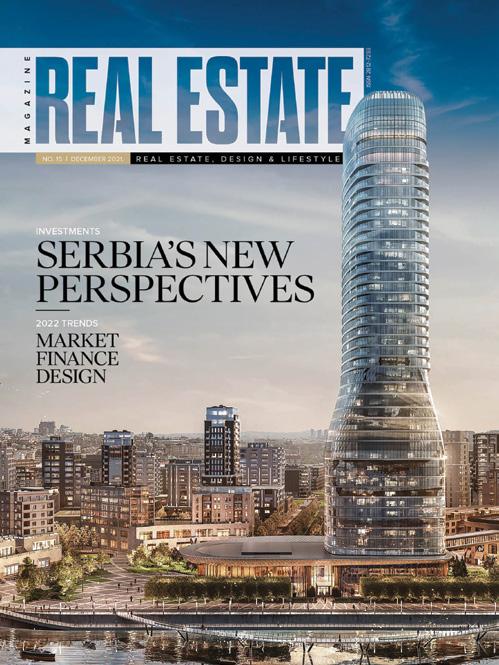
• REAL ESTATE magazine’s digital media platform, which includes a bilingual portal in Serbian and English, as well as official profiles on social media (Instagram, Facebook, and LinkedIn)
• REAL ESTATE magazine’s special, themed print editions

• Newsletter promotions through our large client base
• Organization of round tables, panels, and conferences

If you want to learn about the latest news in the real estate market, network with new business partners, share common problems and visions, improve your business, or better advertise your products and services, join our large REAL ESTATE network. Follow us on our portal and social media profiles, subscribe to our print edition, write to us or call us.
WEST MEDIA WORLD www.realestate-magazine.rs +381 11 32 43 274
redakcija@realestate-magazine.rs
prodaja@realestate-magazine.rs

With more than 110,000 solar panels and more than 180 solar power plants installed throughout Serbia as well as 30 years of experience, expertise, and reliability, MT-KOMEX significantly contributes to the energy transition, helping citizens and companies to produce solar energy themselves
 By: JOVANA NIKOLIĆ
Photos: MT-KOMEX
By: JOVANA NIKOLIĆ
Photos: MT-KOMEX
The energy crisis, whose end is not yet in sight, has caused hardship even in the most developed economies of the world and has challenged us all to turn to renewable energy sources as soon as possible and ensure energy independence and stability. Every kilowatt of green energy, whether it comes from a few solar panels on a home's roof or vast solar farms, moves us closer to the tar-
get of having 40% of Serbia's energy come from renewable sources by 2040.
The local company MT-KOMEX, which has just celebrated its 30th anniversary, makes a significant contribution to the accomplishment of energy transition goals by helping citizens and companies step into the world of solar energy, start producing their own electricity, and significantly reduce electricity bills.

With its expert team, which continuously acquires new knowledge and stays updated with technological changes, MT-KOMEX has so far installed more than 110,000 solar panels on the roofs of households, commercial and industrial buildings for more than 180 clients, with a total installed power of more than 60 MW. They have designed solar power plants with a total power of more than 200 MW, performed more than 120
KOSTIĆ Owner and director
My interest in renewable energy sources began in 2009, when I started the transformation of the company, which has been dealing with projects in this field ever since. At the same time, I realized that I should invest my own capital in the production of solar energy. The first power plant, which I built together with my partners, is Solaris Energy, with a capacity of 2 MW, which was built according to the procedures of the law from 2009. It cost us three million euros, and it has been operational for nine years. We continued to improve in this area and worked on many large projects in Serbia. Together, my team of engineers and
energy audits and analyses, and built more than 180 solar power plants.
MT-KOMEX is currently involved in the construction of the DeLasol solar power plant in Lapovo, which covers an area of 12 hectares. Apart from its size, this solar power plant will also be the largest in terms of capacity in Serbia. It will generate

installers built solar power plants at large industrial facilities in Serbia, such as IKEA, Grundfos, MINAQUA, UNIOR Components, TERMOVENT, Agrosava, and Stop Shop, and we are currently working on installing a solar power plant on the ground in the circle of the Toyo Tires factory.
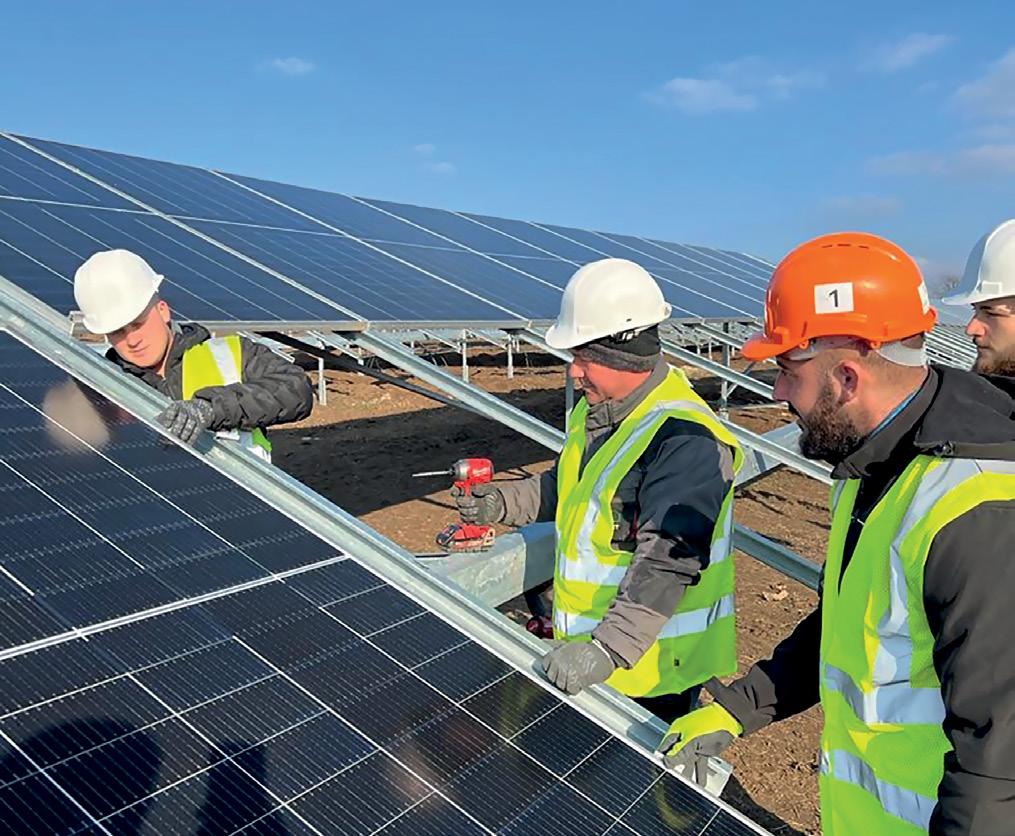

The plan is to develop four more power plants with a total installed capacity of 40 MW. We have received the conditions for the connection of these power plants, and our engineering team is working on the development of technical documentation. The construction of these capacities is planned for the second half of 2023 and 2024.
15,000 megawatt-hours of electricity annually. Its size is also reflected in the number of solar panels – as many as 17,980 of the most efficient panels, with 650/655Wp power generation capacity, were manufactured by the renowned Canadian Solar.
In order to make the best possible use of the sun’s energy, bifacial solar panels, which generate electricity more efficiently than monofacial panels, were prepared for the con -
struction of the DeLasol power plant. With bifacial panels, there is an ability to increase the electricity yield from both sides of the panel, which is why they generate a larger amount of electricity. The solar panels will be placed on a specially made structure that allows greater absorption of reflected radiation. Thanks to the Municipal Administration of Lapovo, which recognized the value and impor-
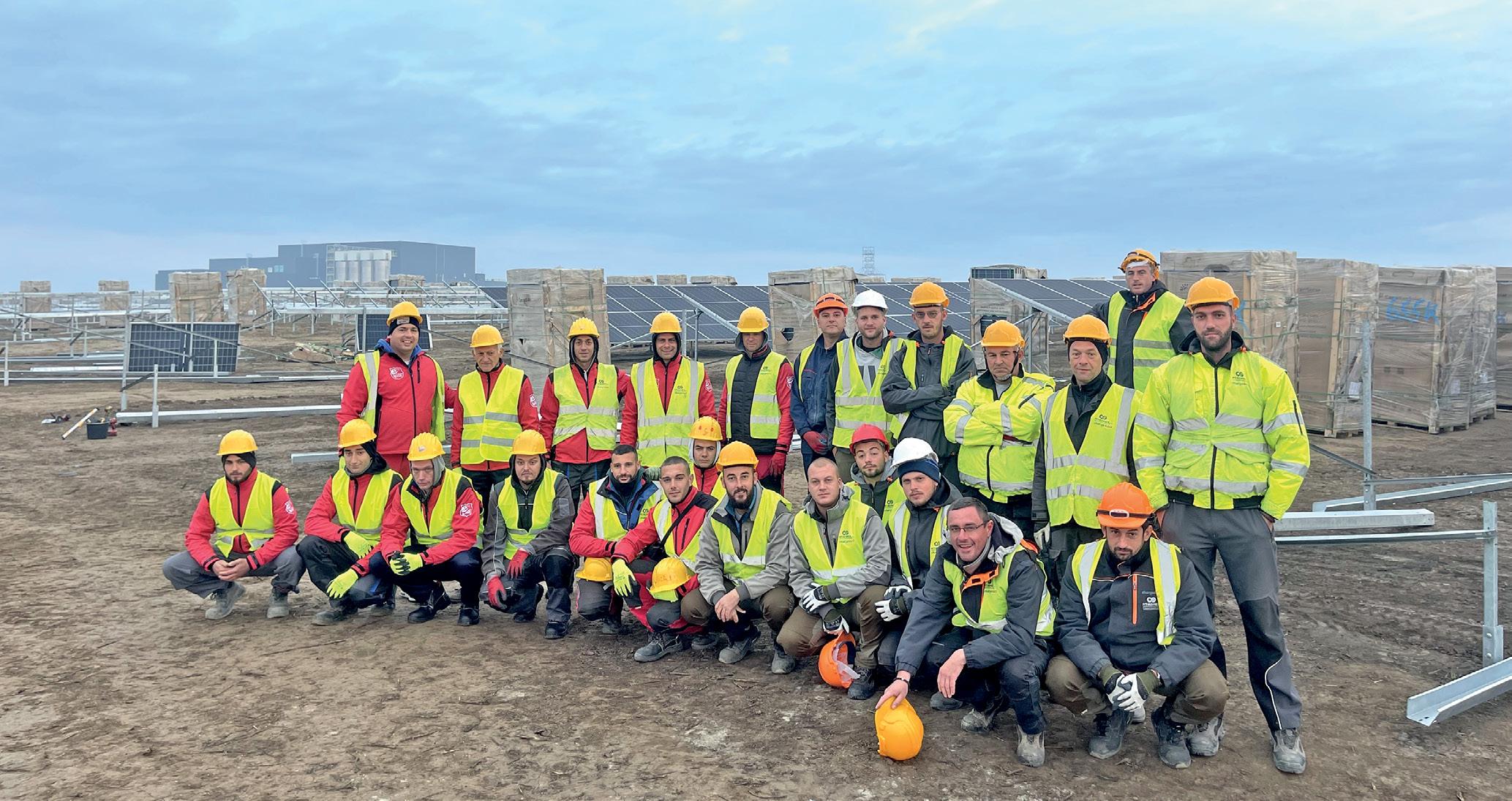
tance of the project, a construction permit was obtained, as well as the conditions for design and connection by the Electric Power Industry of Serbia. This was preceded by the adoption of the urban planning project and the obtaining of an improvement location permit. According to the plan, the power plant will be commissioned in March of this year.
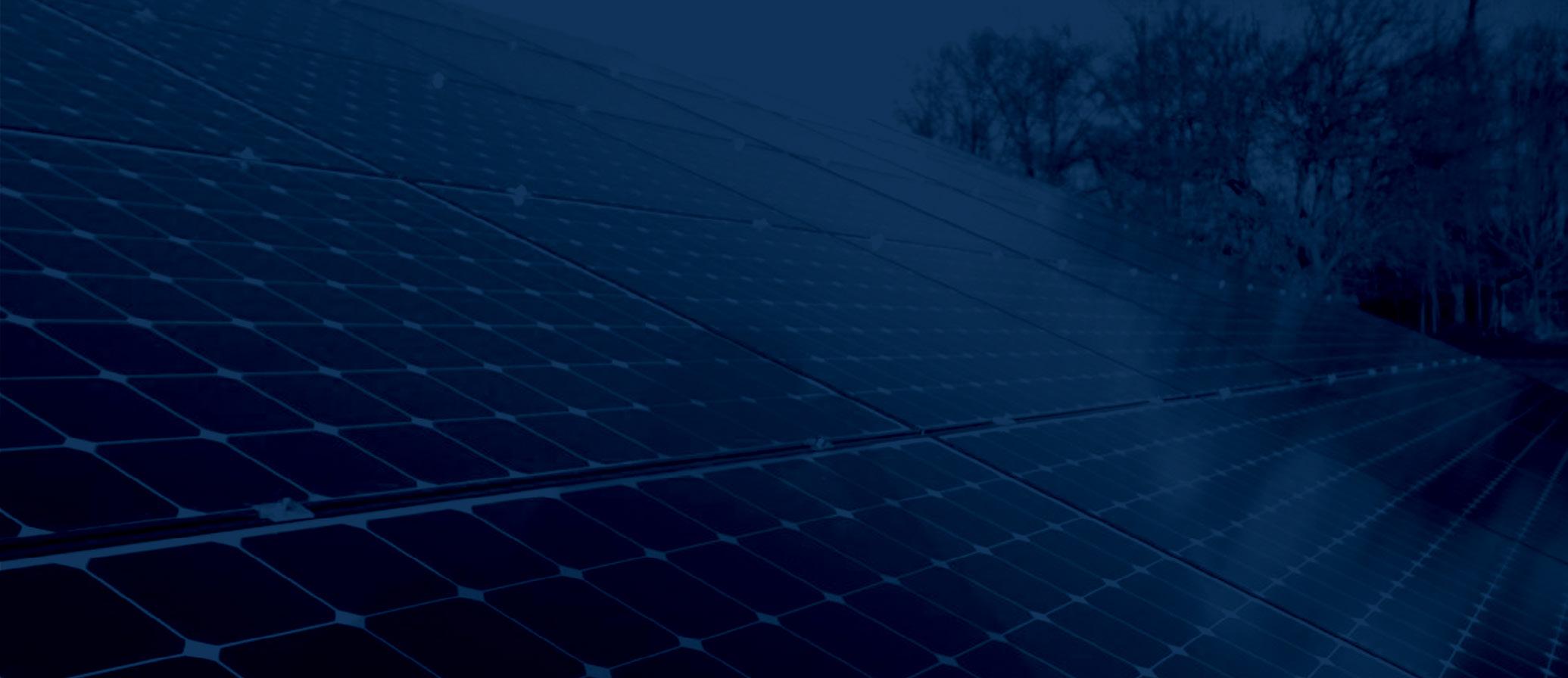
"We invested our own funds in
Miloš Kostić, director and owner of the company MT-KOMEX, recently received recognition for the EY Fast-Growing Entrepreneur of the Year subcategory, awarded by the consulting company Ernst & Young (EY).
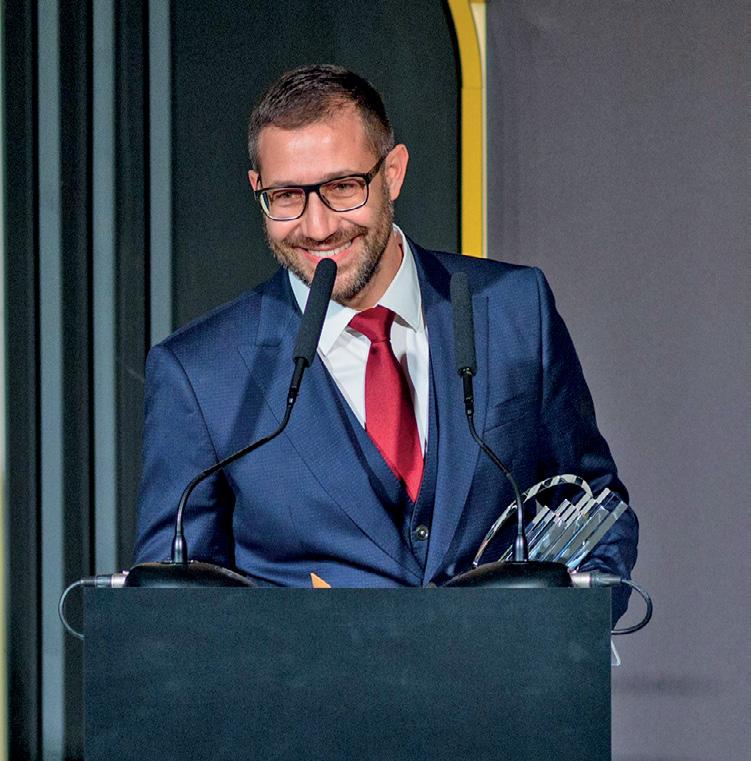
"It is a great honor and pleasure for me to be in the selected company of fellow entrepreneurs. I am happy and proud because this award shows that we are on the right path of development. The organizers and jury recognized that we are hardworking and successful and that my team achieved real results", said Miloš Kostić.
EY Entrepreneur of the Year is the world's most prestigious award for achievements in entrepreneurial business. This global program is different because it promotes entrepreneurial spirit and initiative and recognizes people who have achieved success through their vision, leadership, and innovation.
the construction of this solar power plant, and, of course, as for Solaris Enery, we received full support from ProCredit Bank, which accompanied us in the realization of this project," says Miloš Kostić, owner and director of MT-KOMEX. In accordance with the regulations, a request for an environmental impact assessment was submitted, and a decision was obtained that a study was not required.
The construction of the DeLasol solar power plant is not the only project in 2022 that MT-KOMEX can boast of. In July, a contract for the construction of another bifacial solar power plant was signed between Toyo Tires Deputy General Manager Kenichiro Takasaga and MT-KOMEX

Director Miloš Kostić. The Toyo Tire Taiyo solar power plant, with a to -
tal power of 8.4 MWp, will provide Toyo Tires with 10 to 15 percent of its annual electricity needs.
Anyone who decides to build a solar power plant, with current electricity prices, can expect a return on investment in five to six years. Since there will certainly be an increase in the price of elec-
FIRMLY BELIEVING IN A SUNNY FUTURE, MT-KOMEX CONTINUES TO DILIGENTLY BUILD SOLAR POWER PLANTS, THUS ENSURING A FUTURE FREE OF AIR POLLUTION AND ELECTRICITY SHORTAGES
tricity in the future, it is very likely that the investment return period itself will decrease. By installing solar power plants and using this source of energy, you will become energy independent, which is currently a priority for all of us, and at the same time protect the environment with fewer CO2 emissions.
MT-KOMEX d.o.o.
22 Oslobodjenja Street, 11090
Belgrade
www.mt-komex.co.rs
info@mt-komex.co.rs
+(381) 11 77 04 566
During his many years of work and development, Miloš Kostić always thought about what he could offer the market that was new and innovative. Back in 2014, he contacted Tesla and asked them how to become their partner in the Balkans. Then they told him that the policy of their company is that everything is owned by them and that they are planning the development of the charging infrastructure for 2019 and 2020.
This gave him an idea, and in 2017, he began the development of a project to invest in this infrastructure as well as to launch a digital platform and application Charge & GO that allows drivers of electric vehicles to easily locate the nearest chargers and charge them up quickly and easily. The platform provides drivers with an efficient service for charging and paying for the use of charging points, as well as the ability for companies to remotely manage their charging network. This includes a number of services, such as charging control, charger monitoring, pricing, usage restrictions, and a charging session overview. The easiest way to check the locations and availability of chargers in this network is through the application. Although all chargers can be accessed in multiple ways (via QR code or charger number), if you download the app, you automatically get a lower price and GPS navigation directions.
In agreement with partners who own large chains of gas stations and shopping centers, Charge & GO has so far installed a network of 54 chargers for a thousand users of electric cars in Serbia.

"Our plan is to extend this service to the region, and we have already prepared the opening of companies in North Macedonia, Montenegro, and Bosnia and Herzegovina. Our goal is to have 220 chargers in our possession by the end of next year and to be the largest such network in Serbia," announces Miloš Kostić.
This year, it is planned to install another 67 chargers, including in markets in the region (North Macedonia, Montenegro, and Bosnia and Herzegovina).
The launch of a new platform with the mobile application Charge & GO is expected soon. It will enable even easier access to chargers and better connectivity with charger networks throughout Europe.
The first capital of modern Serbia and the cradle of industry in the Balkans, Kragujevac headed into the future in classic Fiat 500, and to Europe by train. Known for its military and car industry, today it is the most significant center of high-tech and rail industry of Serbia
By: DEJAN RUŽIĆ Photos: CITY OF KRAGUJEVACKragujevac, Serbia's fourth-largest city, is a macro-regional center with a population of around 180.000 people. It is located in the heart of Šumadija and Serbia, only 140 kilometers south of Belgrade via the E10 highway. It covers an area of 835 square kilometers and lies on the banks of the Lepenica River in the Valley of Kragujevac. Open and different, optimistic and creative, Kragujevac is the geographical, political, economic, financial, health, educational, cultural, tourist, and sports center of Central Serbia.
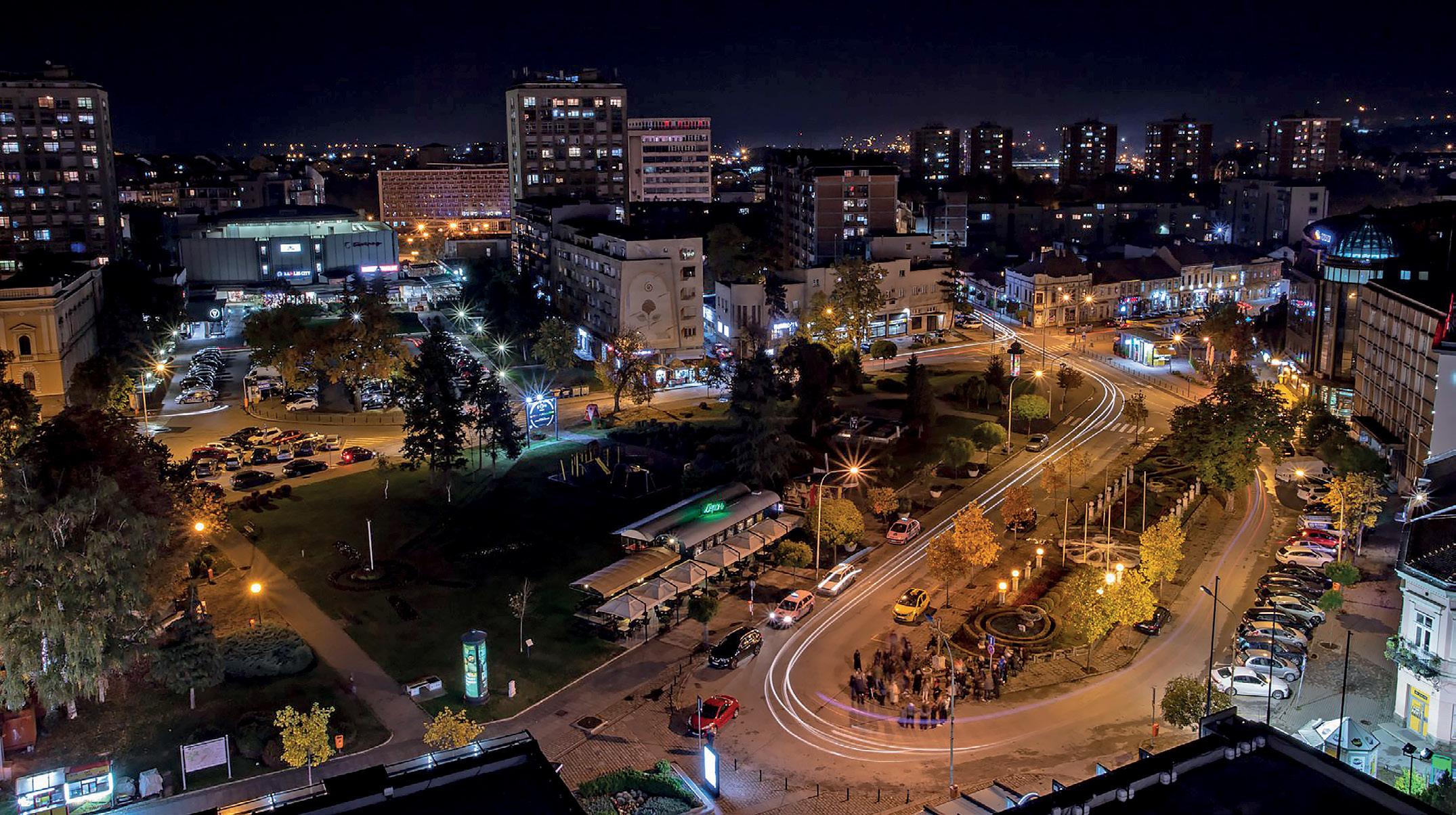
Kragujevac is one of Southeast Europe's leading developed centers of automobile industry and hi-tech, with an improved SME sector in the field of car components and other activities, as well as a broad spectrum of intellectual services. The city's economy is export-oriented, with well-developed systems of innovative SMEs that are closely linked to a developed industry sector. The General Urban Plan 2015, as well as other related plans—the Detailed Regulation Plan and General Regulation Plan—define work zones totaling 5 with 9 complexes, a total area of 1.062 ha, and a pro -

jected maximum capacity of employment of up to 55,000 employees. The city also has numerous brownfield and greenfield investments.
The existing industrial aspect has a long tradition in the metal sector and is connected with modern ICT. Kragujevac is a city of innovation and modern technologies, digitization, and high-tech investments. It is a city that provides opportunities for the employment of highly

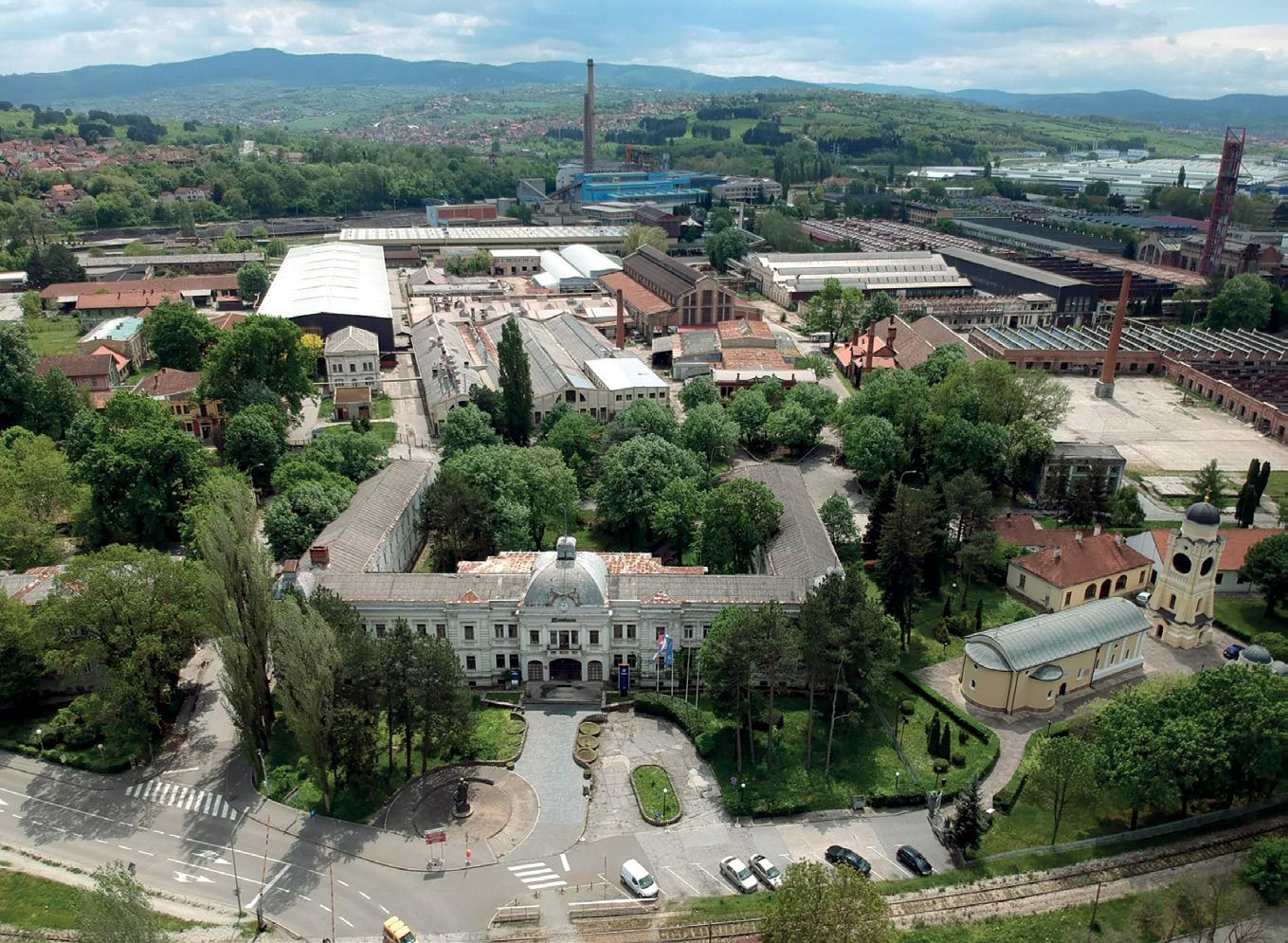

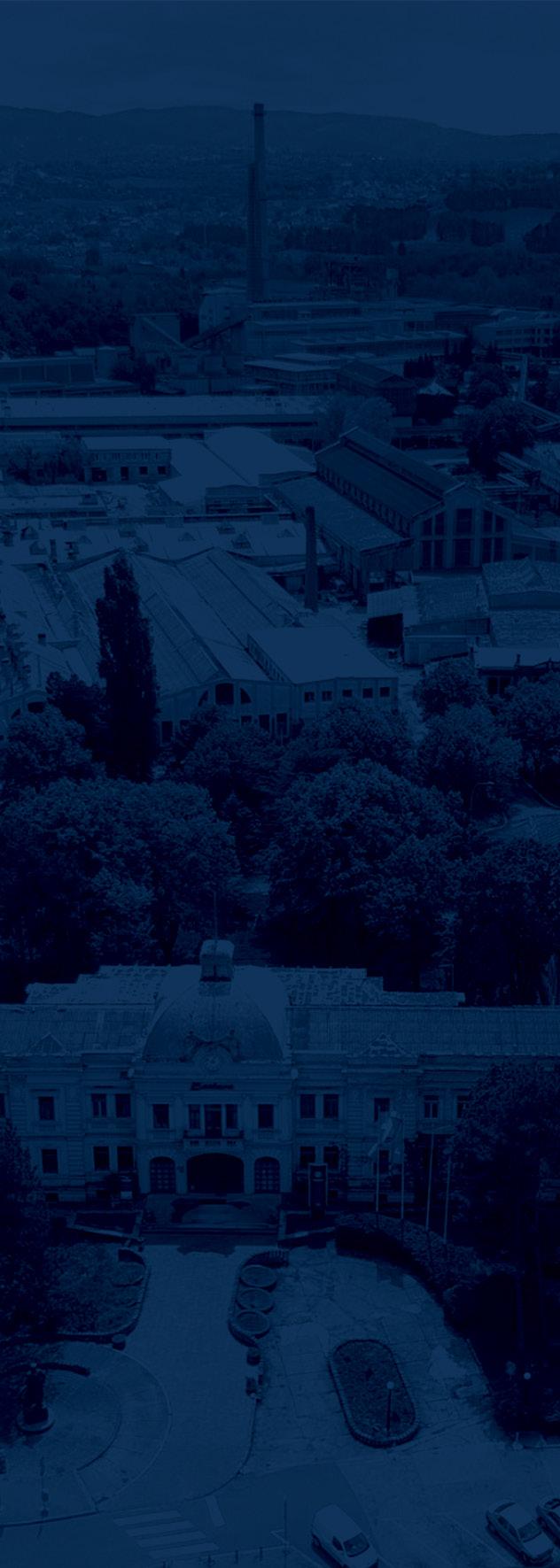
educated human resources. In Kragujevac, there is a developed and stimulating ecosystem with services that support business development.
With the arrival of Fiat and its subcontractors in 2012, Kragujevac is once again one of the leading, highly developed automotive and hi-tech hubs in Southeast Europe. When German Siemens arrived in Kragujevac in 2018, it ushered in a new era in the city's development by starting production of trains that run on European capitals' railroads.
Kragujevac is a city with a rich history and is the former capital of the modern Serbian state. Today, it is the center of industrial and economic development in the Šumadija and Pomoravlje regions. Along with the State Data Center, it is also positioned on the digital map of Europe and the world as a smart city. A rapidly developing administrative, university, health, cultural, tourist, and sports center. The city of youth is also the city of the future. Kragujevac is a city tailored to men, with all the possibilities of a quality life.
MIND Park is an industrial cluster-based area spread across 160 ha, located 12 km from Kragujevac. It began construction in 2018 and has been steadily growing since then. The Park provides turnkey facilities following the business needs of investors. MIND Park has an excellent and brand-new utili-
Arsenal Fest, a music festival with a 12-year tradition, is taking place every June at the location of The Prince’s Arsenal complex. More than 30,000 visitors enjoy three days of music and literary programming, film and video projections, club gigs, exhibitions, etc.


ty network and infrastructure aligned with Industry 4.0, which also ensures the preservation of the environment:
• Geothermal heat pumps
• A power- distributing station with a capacity of up to 20 MW (increasing to 70 MW) and the latest wastewater treatment system
• Optical fiber with a high-speed internet connection
• Gas distribution with the capacity of 2,000 m3/h for the entire park

• BMS security and access control, energy efficiency, and fire protection system
• Data center
• There are currently several companies on the site that manufacture rail vehicle components, such as Siemens and CAF.
• The first Serbian court was established in Kragujevac in 1820

• The first Constitution of Serbia was adopted in Kragujevac in 1835
• The Lyceum of the Principality of Serbia, the first higher education institution in Serbia, was established in Kragujevac by the decree of Prince Miloš Obrenović in 1838. The contemporary, centralized University of Kragujevac was founded in 1976 and today is organized into 12 constituent faculties with 118 study programs in the fields of natural sciences and mathematics, social and human sciences, medical sciences, engineering sciences, and the arts.

• The first Serbian factory was established in Kragujevac in 1853

• The first electric light bulb in Serbia was lit in Kragujevac in 1884


Kragujevac headed into the future with the construction of the State Data Center. The most modern digital data bank in the world enabled the connection of various databases and the development of electronic administration services for citizens and the economy. Some of the world’s largest companies, such as IBM, Huawei, SOX, AIGO, Comtrade, Orion, etc., store their data here.

• MIND PARK - Centre of competence, 160 ha
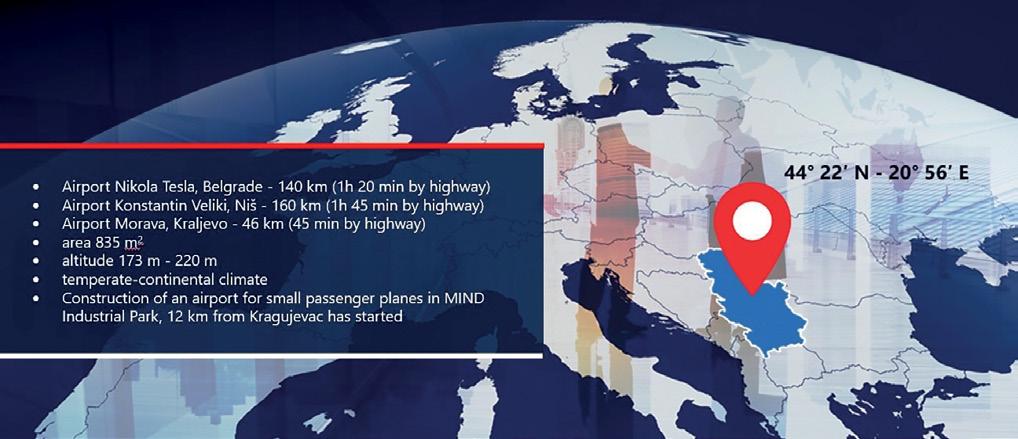
• New work zone – Cvetojevac, 238,5 ha
• Šumadija free zone
• Real estate Phoenix – residential and commercial zone
INVESTMENT OPPORTUNITY: THE RECONSTRUCTION OF THE PRINCE'S ARSENAL
The Prince's Arsenal (Military Technical Institute) in Kragujevac is a unique military, industrial, and architectural complex in Serbia and Europe. The complex is made up of factory buildings and workshops from the late 19th and early 20th centuries. It was declared a cul-

In Kragujevac, visitors can visit plenty of local distilleries and wineries and experience unique local tastes. Pevac in Cvetojevac, Zavet in Čumić, Čolić in Kutlovo, and Podrum TIM in Ramaća are all well-known distilleries. You can sample authentic local wines at ART Wine, Grošnica, Podrum Pevac, Winery Katanić, Kamenica, Winery Trival, Drača, and Winery of Drača Monastery. Wine and rakija (brandy) hub is a location in Kragujevac's old town where you can taste and purchase authentic products from the region's renowned wineries and distilleries from Kragujevac and Šumadija.


tural asset of great importance in 1979. The City of Kragujevac opens an investment opportunity for urban renovation and rehabilitation of this zone of industrial heritage spread over 10,000 m2.
City Hall of Kragujevac
Trg Slobode 3, 34000 Kragujevac, Serbia www.kragujevac.ls.gov.rs
Mayor’s office: +381 (0)34 306 142 gradonacelnik@kg.org.rs

With its rising economy, expanding population and urban capacities, skilled workforce, and highway interconnection that will soon directly connect it with Belgrade, Podgorica, and Sarajevo, Požega is estimated to be one of the fastest-growing towns in Western Serbia with great investment potential
 By: JOVANA NIKOLIĆ
Photos: THE MUNICIPALITY OF POŽEGA
By: JOVANA NIKOLIĆ
Photos: THE MUNICIPALITY OF POŽEGA
The municipality of Požega includes 42 settlements with more than 30,000 inhabitants and covers an area of 426.5 km2. It is located in Western Serbia, in a spacious and sunny basin, where the lower reaches of the Skrapež, Moravica, and Djetinja rivers branch off, forming the Western Morava.
Located between Užice and Čačak, Požega is 189 kilometers from Belgrade, of which
155 km are the highway, which will soon connect Požega directly with Belgrade, Podgorica, and Sarajevo.
Požega is one of the most important traffic hubs in this part of Serbia. The Belgrade-Bar and Požega-Stalać railways meet here, as well as the M-21 and M-22 highways. In the near future, there will also be an intersection of highways leading from Belgrade to the South Adriatic and Sarajevo. This traffic position contrib-

Požega is a place where hardworking and honest people have always lived. During its history, our town has overcome many challenges and grown into a promising municipality, so today we warmly welcome all new investors who are looking for a place to develop their business. I am sure that the best time for the municipality of Požega is yet to come. The imminent completion of the highway that will connect us with Belgrade but also with Europe will enable the further development of the economy in our town. We invite you to be among the first to choose your place in our new industrial zone and witness the development of our city with us. The municipality of Požega welcomes you!
utes to Požega being at the crossroads of two belts of intensive development, along the Western Morava and along the stretch of Belgrade-Bar.
Požega mainly belongs to the western tourist zone and is a member of the Western Serbia Tourist Region. The transit tourist routes are E-763, of international importance, and E-761, of international-national importance.
Požega is a place with great opportunities for development. Today, a large number of small and medium-sized companies operate in Požega, which represent the basis of the development of the town. In Požega, food, clothing, furniture, a wide range of metal industry products, but also industrial robots and
computer software are produced. Agriculture and animal husbandry, trade, transport, and services in general are developed.
The development potential of this place represents a unique combination of geographical location and connection with the availability of quality workers and raw materials for production. Around Požega, at a distance of no


Prince Miloš Obrenović, one of the most important rulers of Serbia, was born in a village near Požega. The Miloš Obrenović memorial complex is located in the village of Gornja Dobrinja. The complex consists of a church, a garden, a bell tower, a memorial fountain, and a monument to Prince Miloš Obrenović. The church, which is part of the complex, was built in 1822 by Miloš Obrenović as his endowment.

more than 40 km, there are five other cities and municipalities: Čačak, Užice, Arilje, Kosjerić and Lučani, with a total population of about 150,000 inhabitants in urban areas, which guarantees the availability of workers of all levels of education and profiles. Vocational secondary schools in Požega have many years of experience and cooperation with the economy in the field of dual education, where they monitor and respond to the needs of the economy. Thus, because they had a lot of practical work and became familiar with production processes during their education, students can get involved in work immediately after the end of classes every year.


A large number of small and medium-sized enterprises as well as craft
shops are a base where future investors can look for their subcontractors or simply use their services.
In terms of infrastructure, Požega is very well equipped. Future investors can


INDUSTRIAL PARK OF POŽEGA
• Apx. 200ha of space is available to build your facilities on it
• Direct access to roads, less than 3km from the future highway entrance
• Enough power is available; a nearby electricity facility and high-capacity gas supply will power up your production.
• Water supply and sewage are available
SKILLED WORKERS AVAILABLE
• Požega is surrounded by five neighboring towns at a distance of 12 to 35 km
• The total population of Požega and neighboring towns is over 150.000 people
• Strong education: there are several technical schools in Požega and neighboring towns, and Technical faculty in neighboring Čačak
• Požega has a long history of industry and manufacturingPožega welcomes you! We will gladly help you with all necessary administrative procedures so you can set up your business quickly and easily.
expect sufficient amounts of electricity, gas, or water. A large regional wastewater treatment plant that will be able to respond to the needs of the economy is also in the design phase.
Požega also has significant tourist capacities. The vast plateaus in the north of the municipality are already recognized as a tourist destination and are a good place for the development of hotel facilities. At the same time, in the south of the municipality of Požega, there is also a spa with tested and proven healing mineral water that locals have been using for decades for treatment. A feasibility study was also
done for this location and showed that the investment in spa tourism and the construction of spa facilities would be very profitable.
The municipality of Požega has a developed offer of etnotourism. Hospitable hosts, home-made food, fresh air, and untouched nature attract many tourists looking for a real break from stress. For all those who visit the villages of Požega, there is a large selection of places that can be visited, from Ovčar-Kablar Gorge

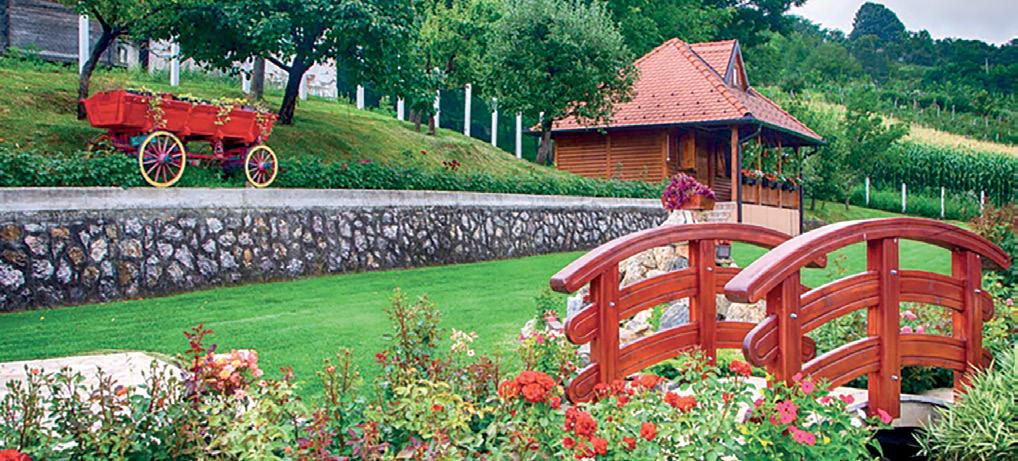
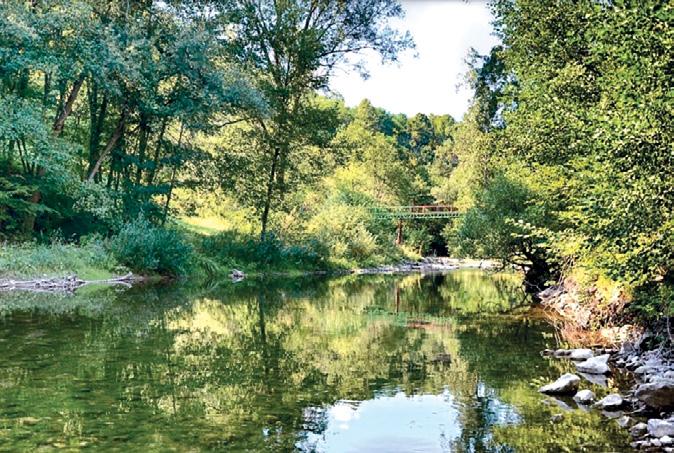
and the monastery to Divčibar, and the entire Zlatibor district with mountains, rivers, caves, and lakes.
Opštinska uprava Požega


Trg Slobode 9
31210 Požega, Srbija
+ 381 31 3816 401, +381 31 3816 257
opstina@pozega.ls.gov.rs
www.pozega.org.rs

Photos: www.topoz.org.rs
In 1832, the then ruler of Serbia, Prince Miloš Obrenović, ordered his secretary to form a settlement next to the Skrapež River. The secretary of the prince's office completed the task easily and simply. In the vast plain, he drove a stake, tied a long rope to it, and drew a circle like with a devider. Thus, by pulling the transversal into the center, at the intersection of the main streets, a circular square was created and became the symbol of the town. Houses, taverns, and shops sprung up around the circle, and the center itself was decorated with a memorial fountain to the liberators, surrounded by flowers and greenery. Today, after 190 years, the circular square remains the main town landmark, together with a beautiful memorial fountain made of white stone. In 2012, the square got a modern look, received the award for the most successful architectural work, and was also declared the most beautiful square in Serbia. Today, the square is decorated with three fountains, two amphitheatres, a summer stage, and a circular promenade. The square was and remains a place of gatherings and numerous events.
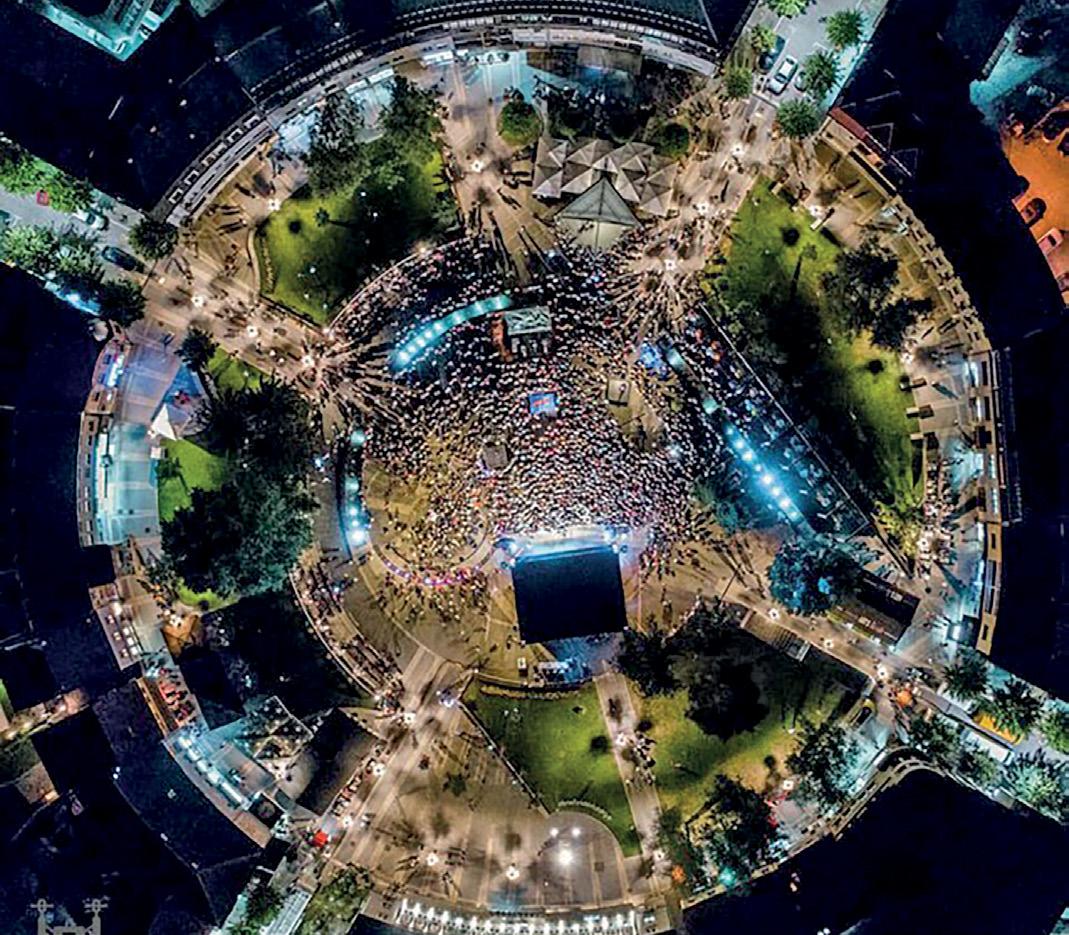
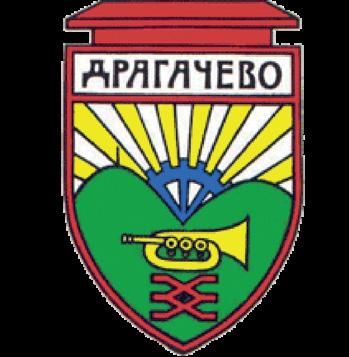
The host of the world-famous Guča Trumpet Festival, which gathers every year around half a million visitors, and the rare natural gem ideal for all types of active vacations and genuine rural tourism, the municipality of Lučani in Western Serbia offers a great potential for industrial development in a vast zone of around 100 ha
 By: JOVANA NIKOLIĆ
Photos: THE MUNICIPALITY OF LUČANI
By: JOVANA NIKOLIĆ
Photos: THE MUNICIPALITY OF LUČANI
The municipality of Lučani is located in Western Serbia, in the Moravica District. It covers 454 square kilometers, and according to the last census, it has 17,000 inhabitants. This area is a large basin bordered on all sides by the mountain ranges of Ovčar, Kablar,
and Jelica and the Zapadna Morava and Bjelica rivers. In the center of the municipality is the small town of Lučani, about 30 km away from nearby towns Čačak and Užice. The municipality of Lučani is connected with the capital of Serbia, Belgrade, at a distance of 150 km by highway.
With the development of the chemical and military factory "Milan Blagojević," Lučani municipality became the industrial heart of Western Serbia in the middle of the past century. The municipality is recognizable by the following companies: Maksima, Hidrokomerc, Panekspres, Aurora, Stakloreklam, Agropartner, Jugoplast, and IKL Foundry, as well as by the world-famous tourist event the Guča Trumpet Festival, also known as the Dragačevski Sabor. On the territory of our municipality, qualitative production of fruit is carried out, primarily raspberries, blackberries, plums, and apples, as well as vegetable crops and potatoes, which are exported throughout Europe.

The municipality of Lučani also has suitable industrial land with exceptional infrastructural capacities, with a size of over 100 hectares, which is connected to the "Miloš Veliki" highway.

The territory of the municipality is characterized by exceptional natural attractions such as Ovčar-Kablar gorge, the lake in Vučkovica, Rćan cave, Jelica mountain, Ovčar mountain, protected natural assets (forest community and trees in the villages of Lučani municipality), as well as favorable preconditions for the development of rural tourism based on preserved nature with plenty of attractions (mountains, rivers, mineral waters, forests), along with a decades-long tradition of rural tourism and cultural
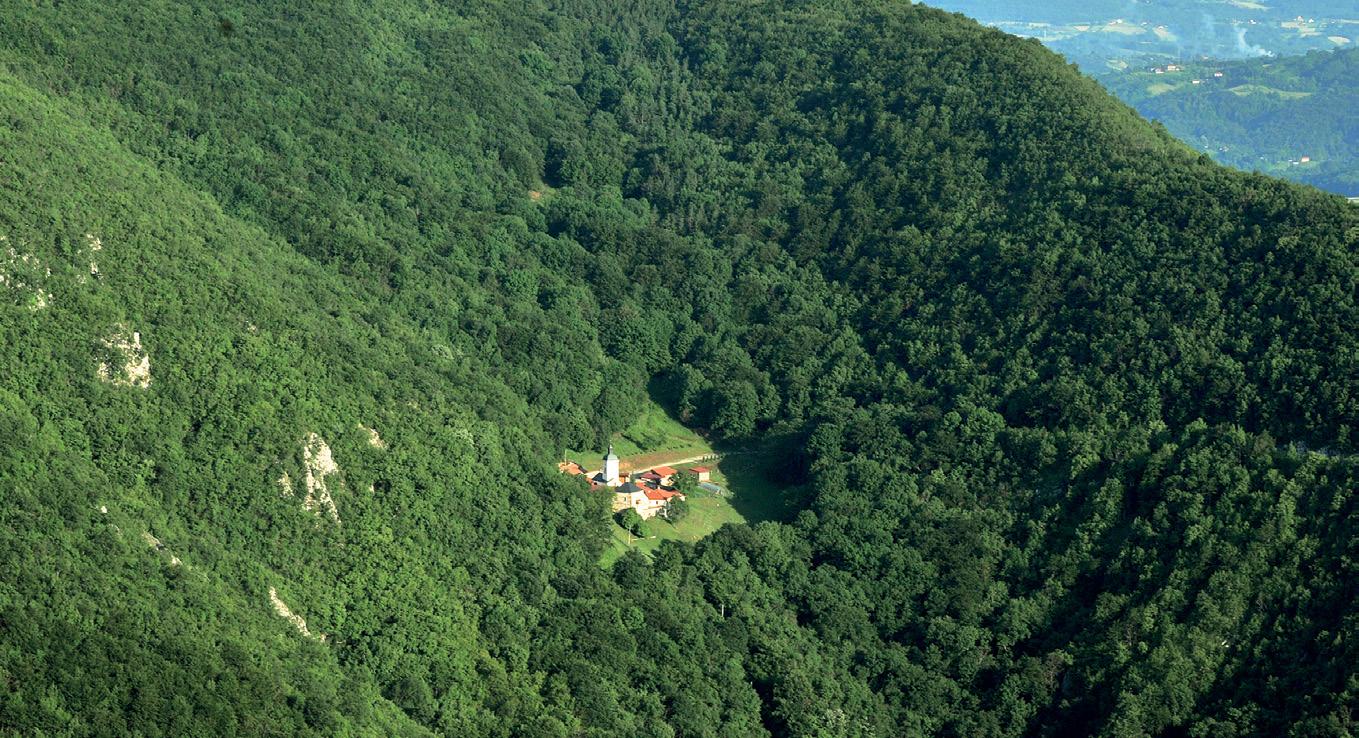
heritage. The most important cultural assets are: archaeological sites, monasteries, churches, tombstones and wayside monuments, museums, cultural and historical monuments, and memorials.
An area of exceptional importance that is under the protection of the state is the Ovčar-Kablar gorge. The gorge is distinguished by the fact that few gorges are decorated with such pronounced pinched meanders or thermal springs as this one. That is why the state is currently investing intensively in the revitalization of this spa.
The healing water of the Ovčar spa has a temperature of 35°S to 37.5°S, and its composition is low sulfur, iodine water. There is the possibility of rafting and hiking, and more and more tourists practice active vacations in nature, on the banks of rivers and lakes, as well as sport fishing.
The president of the Municipality of Lučani
Along with the construction of the "Miloš Veliki" highway, we are working on the development of an industrial zone of over 100 hectares. With exceptional capacities and complete access to all installations, the industrial zone will significantly improve the business environment of the municipality of Lučani. I believe that, in addition to the already numerous successful companies, we will be an excellent industrial destination for business investors from the country and abroad, who will find all the necessary prerequisites for successful management operations in the new industrial zone of the municipality of Lučani.

The most significant cultural manifestation on the territory of the municipality is the Dragačevski Sabor or the Guča Trumpet Festival, which has an international character and represents the brand of Serbia. In addition to the trumpet festival, the Dragačevski Sabor of Trumpeters is also an event where singers, dancers, naive painters and sculptors, masters of domestic crafts, and other local folk and artists from the diaspora represent and interpret the authentic national cultural and artistic heritage of the Serbian people, as well as other cultural and artistic programs.
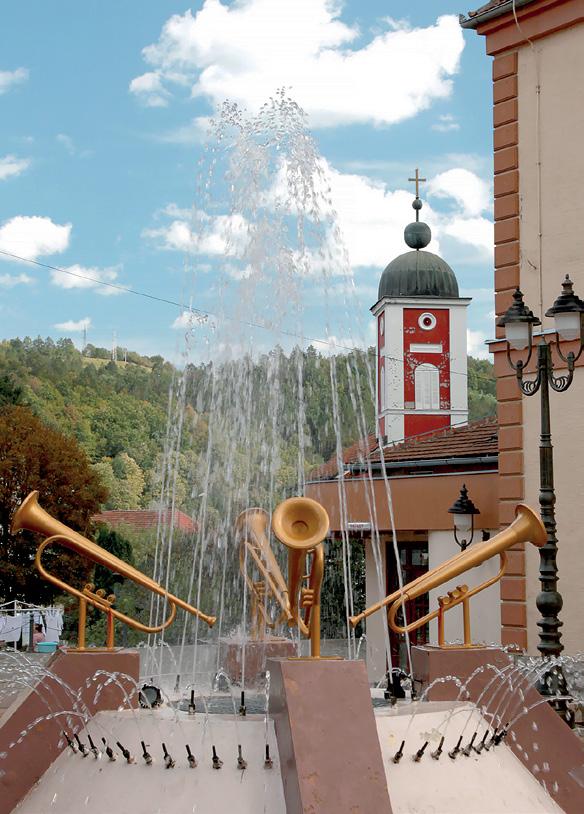


On the slopes of the mountains Ovčar and Kablar, like the most sacred spiritual pearls, there are ten ancient monasteries and two places of prayer, which is why it bears the name Serbian Holy Mountain.



About 500 million dinars are planned to be invested in the Ovčar spa: for the silting of the Medjuvršje lake, for the Natural History Museum and parking lot, for the construction of a rehabilitation center, for water supply and sewerage, and for a glass viewpoint on Kablar. During the previous year, projects worth 185 million dinars were realized in the Ovčar-Kablar gorge.
On the territory of the municipality of Lučani there is a hunting ground "Dragačevo", which belongs to the mountain type of hunting ground and covers an area of about 360 km2. The hunting ground is attractive and has a lot of different game animals from which they are reared, protected, and hunted: roe deer, wild boar, rabbit, pheasant, partridge, wolf, fox, marten, badger, magpie, crow, and other animals.
On its entire territory, it has hunting lodges, checks for big game, feedlots, and shelters for pheasant game. For foreign and local hunters, commercial hunting is well organized and accommodations are provided, as are special parts of the hunting grounds for big game, professional escorts and transportation, and everything else required by regulations and provided by developed hunting tourist destinations.
The municipality of Lučani defined the detailed regulation plan "Petlja" as a location that includes the activation of a new belt for the needs of industrial development, which is positioned next to the existing industrial complex of the company "Milan Blagojević Namenska" Lučani, in the populated place Jokovići, and which is connected to the highway "Miloš Veliki" by a loop.
The future industrial zone, with an area of about 100 hectares, is located next to the motorway itself and is infrastruc -
turally connected by gas, sewage, water, telecommunications, and electric power networks.

In the aforementioned scope, the construction of all types of business and production facilities is planned. The plan includes an industrial zone and small production facilities. Industrial zones are planned in the central part of the plan, along the Bjelica River, while small production plants are also located in the central part, but in the triangle between the highway (loop) and the state road of the IIA order. The advantages of this location are that it has a connection to state roads
and is located on the route of the Belgrade-South Adriatic highway, which is under construction. This is currently one of the most attractive locations in Serbia for potential investors. In addition to the mentioned zone, the General Regulation Plan for the town of Guča has planned another location for an industrial zone in spatial unit V: Industrial Zone, an area of about 15ha.
The zone was created with the aim of expanding the construction area and planning the development of industry and production as its main purpose in order to secure locations for economic development, open new production
The Guča Trumpet Festival is a manifestation of national creativity, known in the world as the "pearl of Serbian folk spirituality". It brings together over 2,000 participants, who are followed by around 200 accredited print and electronic media from all continents. During the seven days of the event, up to 500 thousand people visit the municipality. Over the past 50 years, the municipality of Lučani has welcomed and hosted at the event around 13.5 million visitors from the country and the world, as well as almost 10,000 trumpeters.


complexes, encourage the development of the regional and local economies, and create new jobs. The mentioned zone has appropriate roads and an adequately developed traffic network, which are necessary for the functioning of the economy and businesses, as well as the possibility of their expansion.
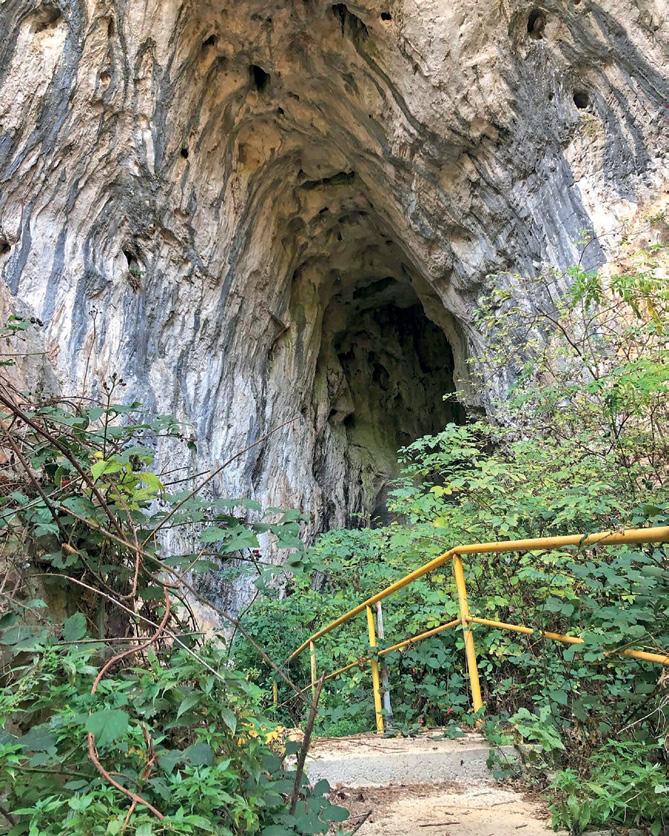
The Municipality of Lučani


Jugoslovenske Armije 5, 32240 Lučani
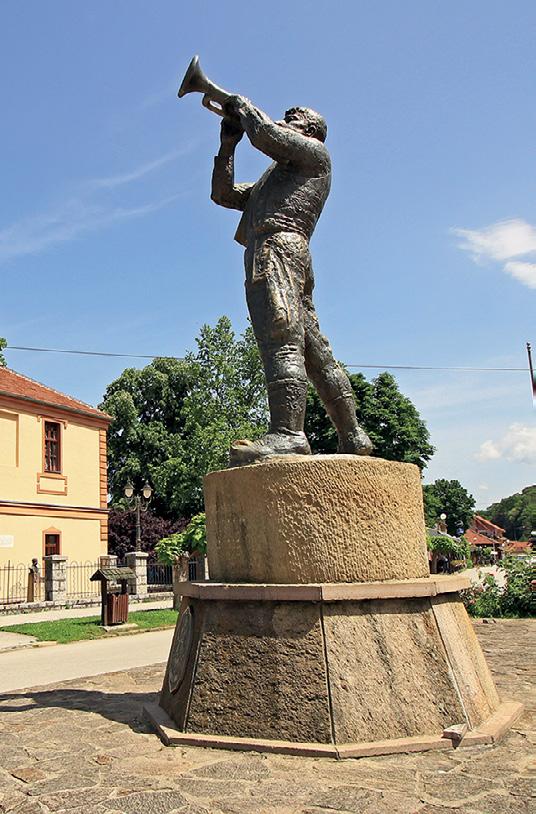
+381325150600
www.lucani.rs
opstinalucani.sefkabineta@hotmail.com

Around ten years ago, Aleksandar Matić accidentally began taking urban photographs. He now has tens of thousands of fans on social media, and the photos he never stops taking around his hometown, mostly for his soul, never fail to move viewers
By: ALEKSANDRA MIRKOVIĆ Photos: IG @ACAMATIC / www.throughmyeyes.rs
Hometown Belgrade is an inexhaustible source of inspiration for Aleksandar Matić's photography. He began observing Serbia's capital and the Western Balkans' largest urban zone through a lens, more specifically a mobile phone camera, more than ten years ago.
Locations like the Saint Sava temple, the largest sacred edifice in Southeast Europe, the Kalemegdan fortress, a witness to turbulent history at the confluence of the Sava


and Danube rivers, views of the horizon from natural elevations such as Gardoš, Košutnjak, and Avala, as well as from the roofs of tall buildings, the urban core, and shots from city streets that are constantly bustling with cars and pedestrians—everything is equally fascinating to the tireless and self-taught urban photographer.
He took the initial pictures while working as a brand manager for a company and spending the majority of the day out in the field. He start-
ed sharing photos on Instagram and gained a significant following pretty soon.
It was the impulse behind creating a community of Instagram users who adore Belgrade photography (@ig belgrade) to serve as a virtual gallery of the city's most stunning photos. The page currently has more than 72,000 followers and is updated every day.



"I often feel like a tourist in my own city. And, no, I'm not tired of taking pictures of well-known streets and squares. It fulfills me.
I still take photos primarily for my soul, because every photo is my view. It's a way to express creativity and capture a personal view of my city," says Aleksandar, who updates his Instagram account @acamatic daily with photo works and has more than 55,000 followers.
BELGRADE WAS THE LOCATION OF STRONG EMPIRES OVER THE CENTURIES, WHEN A VARIETY OF CULTURAL FORMS EMERGEDThe Sava bridge Aleksandar Matić, photographer
Aleksandar grew up in New Belgrade, a part of the Serbian capital built in the second half of the 20th century. He is inspired by both modern areas and older parts of Belgrade—on the right bank of the Sava and the right bank of the Danube.

The history of Belgrade dates back centuries. The region's first settlements, the Vinča culture, date back more than 4,800 years. Belgrade was the location of strong empires over the centuries, when a variety of cultural
forms emerged. The city has been built, but it has also been demolished. Although each neighborhood could tell an authentic story, there are not many building traces to evoke a bygone era. That is why the photos of the urban photographer are a testament to the beginning of the 21st century.
When he started photographing the city, drone technology had not yet been developed. Aleksandar reveals with a smile that he climbed to the highest roofs in search of

the best shots, including the Belgrade Palace, the Slavija Hotel, and the former administration building of Beobanka in Zeleni Venac. He climbed all the tall buildings, which offer a view of all four corners of the world and different Belgrade skylines, including those in the east, bordered by Belgrade's Zvezdara forest, the distant Avala mountain to the southwest, the course of the blue Danube or its right bank, or the winding course of the Sava river. With the dynamic construction of the last
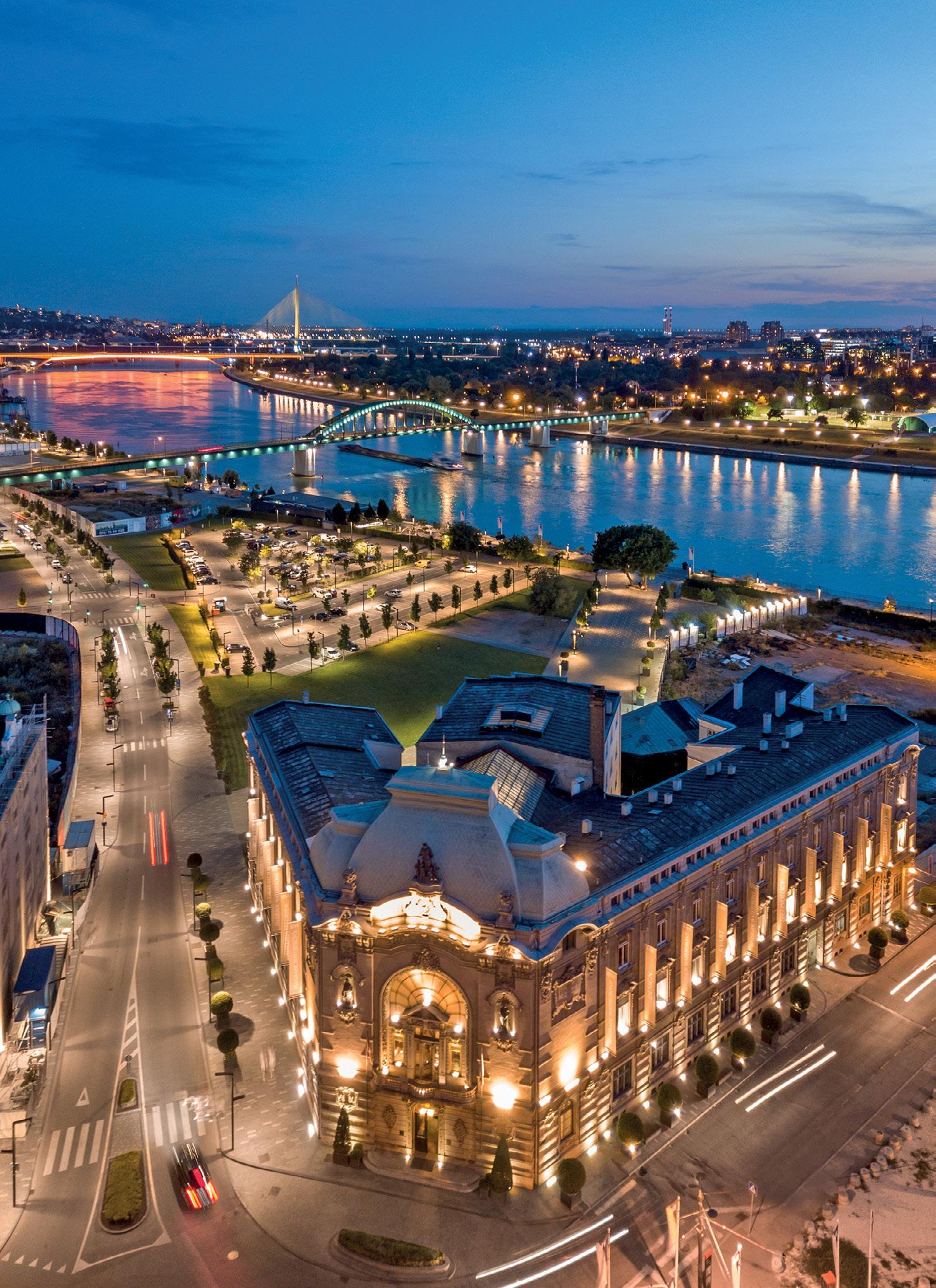
few years, the city got skyscrapers such as Kula Beograd, within the Belgrade Waterfront complex, which is currently the tallest building in this part of Europe with its 168 meters and 42 floors. Kula Beograd is followed by the West 65 Tower, which has one fewer floor and is 155 meters high, and the Skyline AFI Tower, which is 132 meters high.
Some of Belgrade's now-"low" buildings remain Aleksandar's favorites for portraiture. Over time, he learned what was needed from

administrative permits but also to necessarily bring a warm jacket for photo expeditions in the Belgrade "urban Himalayas" because the well-known Belgrade wind, košava, does not stand still at those heights.
He can't decide whether he prefers day or night sessions. He singles out two special hours in the evening during which, he says, the most beautiful and his most creative photographs
of Belgrade are created. It is the golden hour during sunset and after sunset—the blue hour!


THERE ARE NEW BUILDINGS IN MANY LOCATIONS THAT ARE IDEAL FOR NEW PHOTO CHALLENGES. THEY OPEN SOME PREVIOUSLY NON-EXISTENT ANGLE OF VIEW; THEIR FACADES GIVE A NEW REFLECTION

He recommends all guests of Belgrade visit and experience the unforgettable view from Gardoš and Kalemegdan, even if they are not lovers of images like him. The fortress is his favorite position, from which he enjoys time and time again waiting for the sunset and photographing magical portraits of his native, white city.
He is fascinated by the speed of the con-

struction of new buildings in the city. "When I look at some pictures from the beginning of the work and now, I only then see how much the city has changed. There are new buildings in many locations that are ideal for new photo challenges. They open some previously non-existent angle of view; their facades give a new reflection. All of this is an endless source of motivation to keep going," Aleksandar says.

Colliers offers a comprehensive portfolio of commercial property services across Serbia to occupiers, owners , investors and developers on a local, regional, national and international basis. Services include commercial property sales, agency services, real estate management, property valuation and advisory, real estate consulting, office space design, project management, property marketing and market research.
What sets Colliers apart is not what we do, but how we do it.
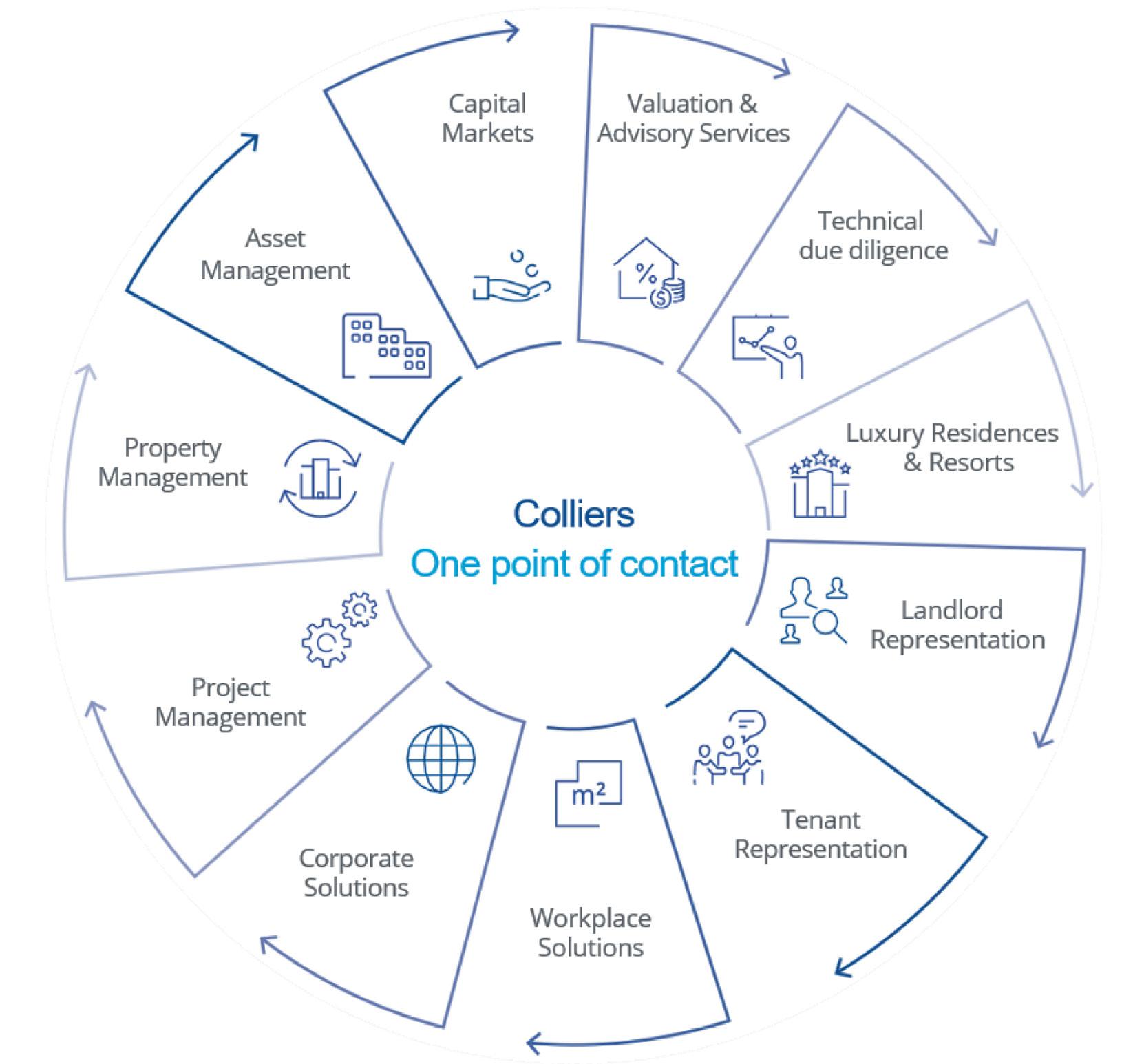
Colliers ( NASDAQ, TSX: CIGI) is a leading diversified professional services and investment management company. With operations in 63 countries, our 17,000 enterprising professionals work collaboratively to provide expert real estate and investment advice to clients. For more than 27 years, our experienced leadership with significant inside ownership has delivered compound annual investment returns of 20% for shareholders. With annual revenues of $4.5 billion and $81 billion of assets under management, Colliers maximizes the potential of property and real assets to accelerate the success of our clients, our investors and our people. Learn more at corporate.colliers.com, Twitter @Colliers or LinkedIn. Colliers Serbia, office@colliers.com

